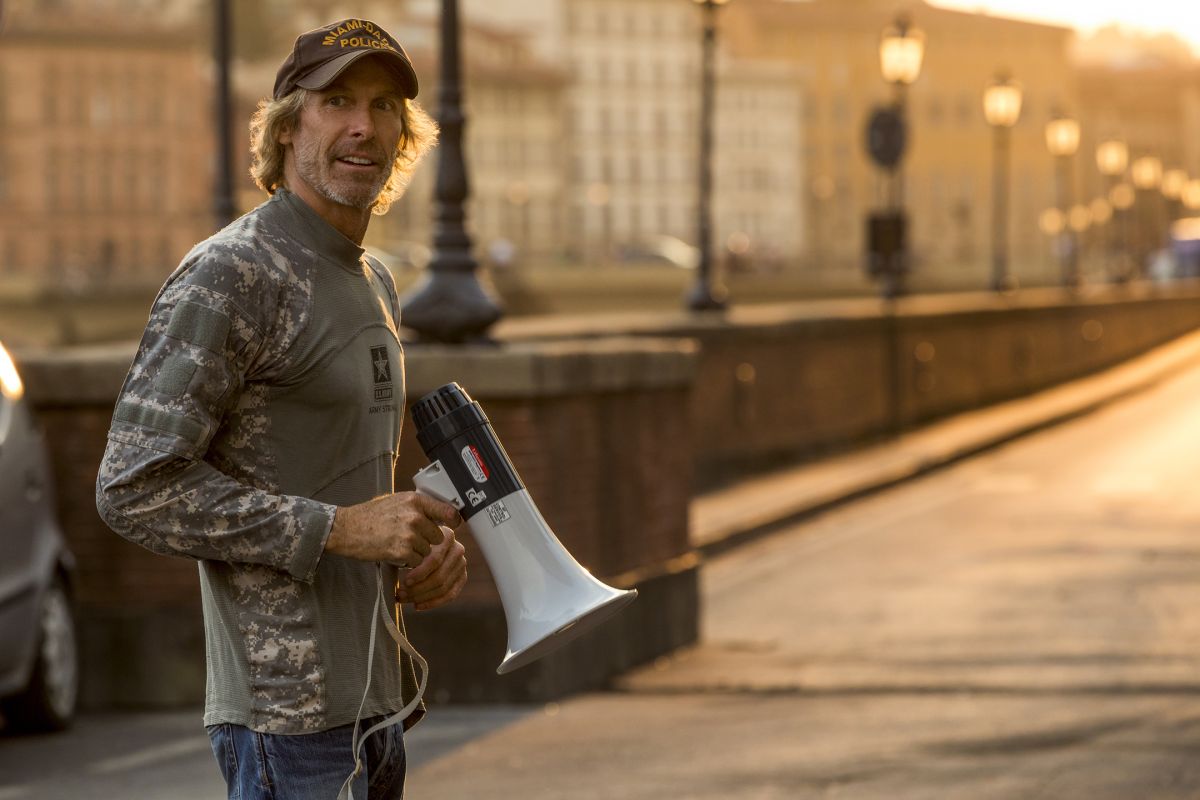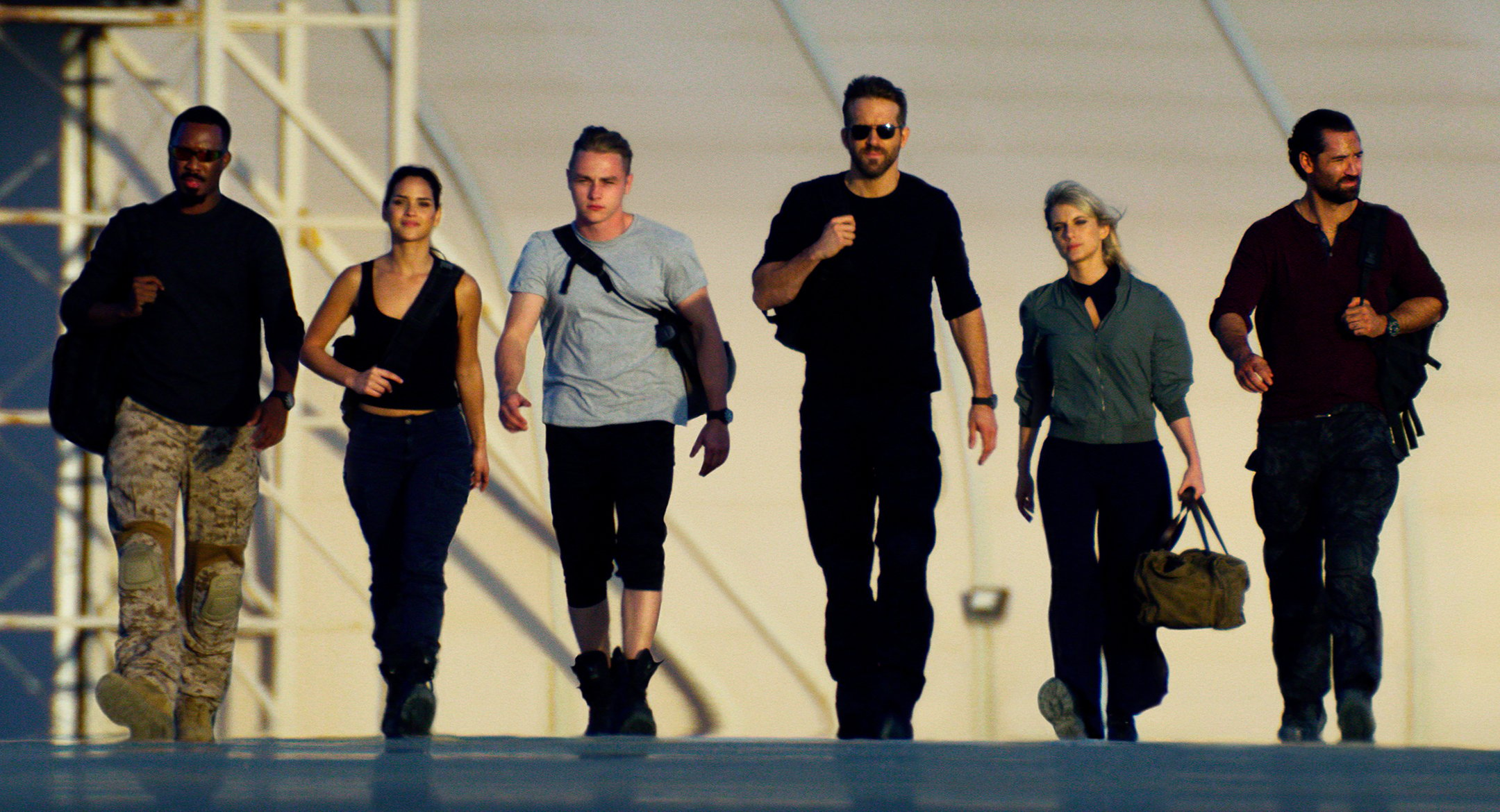
6 Underground: Taking “Bayhem” to the Limit
Bojan Bazelli, ASC and other key collaborators discuss their high-intensity shooting approach to director Michael Bay’s latest action-packed production.
Unit photography by Christian Black. Photos courtesy of Netflix
In a 1962 interview with Alfred Hitchcock, French director and journalist François Truffaut suggests that the elder filmmaker had developed a habit of trading plausibility for pure emotional impact in his movies, starting with the 1935 spy thriller The 39 Steps. “It’s a style that tends to do away with anything that is merely utilitarian, so as to retain only those scenes that are fun to shoot and to watch,” posits Truffaut, adding that “it’s the kind of cinema that’s extremely satisfying to audiences and yet often irritates the critics.”
“I’m not concerned with plausibility,” Hitchcock rejoins.
It would seem that neither is director Michael Bay, whose films are nothing if not fun to watch. Each of his 14 feature films, from Bad Boys (1995) to 6 Underground (2019), possess the same basic qualities: They’re big, fast and gorgeous; their plots rely on the implausible and they do extremely well with audiences, but not so much with critics.
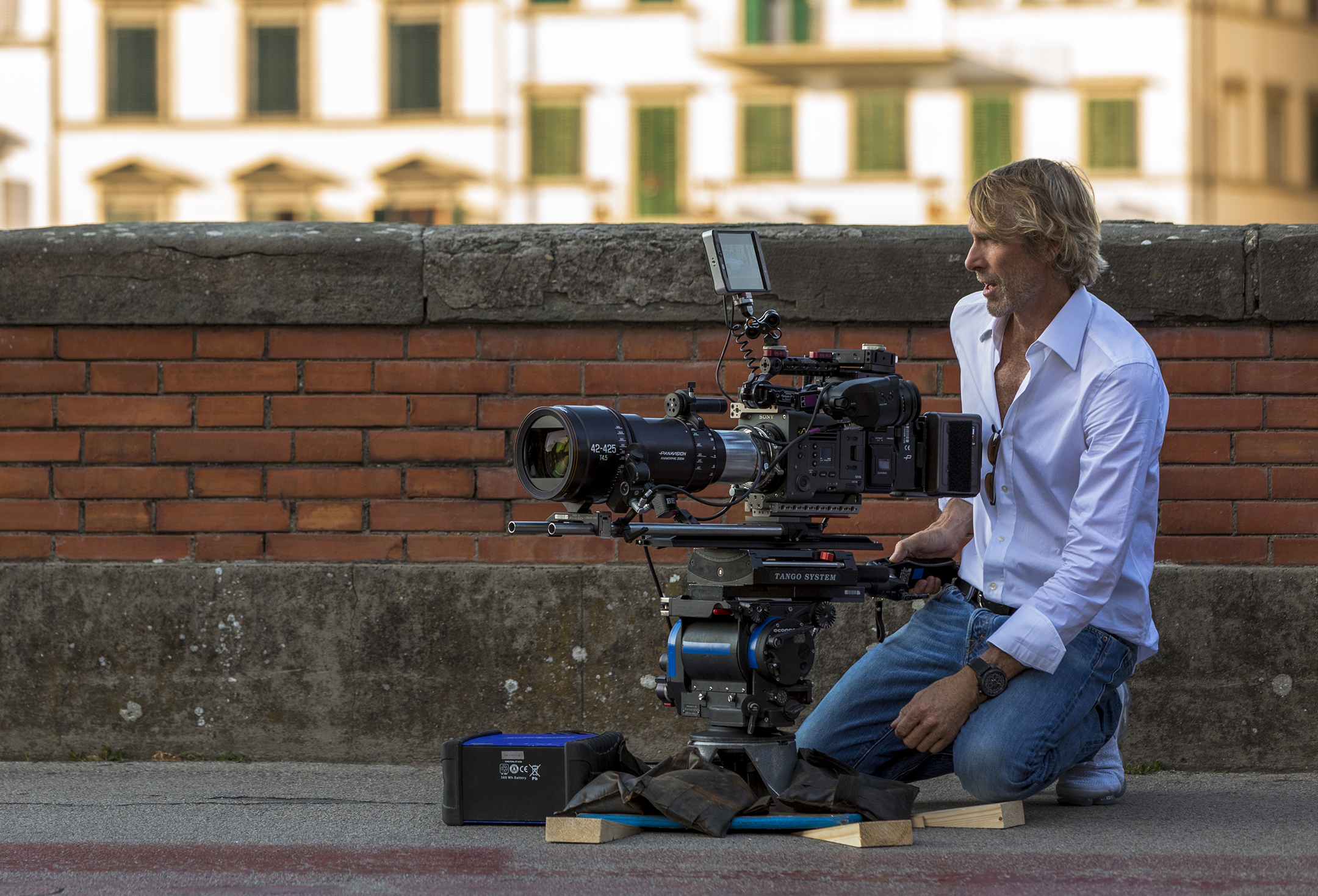
But are they fun to shoot? Working on a Michael Bay film has been described by some as a difficult, if not punishing experience, and yet a solid crew of “Bayhem”-hardened veterans — production designer Jeffrey Beecroft, visual effects supervisor Richard R. Hoover, special effects supervisor Terry Glass, gaffer Martin Smith, key grip Darren Holland, 1st AC E.J. Misisco and camera operators Roberto De Angelis and Lukasz Bielan — return for film after film. Certainly there’s fun to be had, but what draws them in and keeps them coming back is the opportunity to work with a singular talent and to push their skills to the absolute limit.
That’s what enticed 6 Underground cinematographer Bojan Bazelli, ASC.
Originally approached to shoot Transformers: The Last Knight (2017), Bazelli didn’t take the job due to scheduling conflicts (it went to Jonathan Sela instead). A year later, Bay approached him with 6 Underground. “I didn’t really read the script before accepting the job,” Bazelli admits. “That wasn’t as much of a concern as my interest in making a movie with Michael. The question is what kind of movie?”
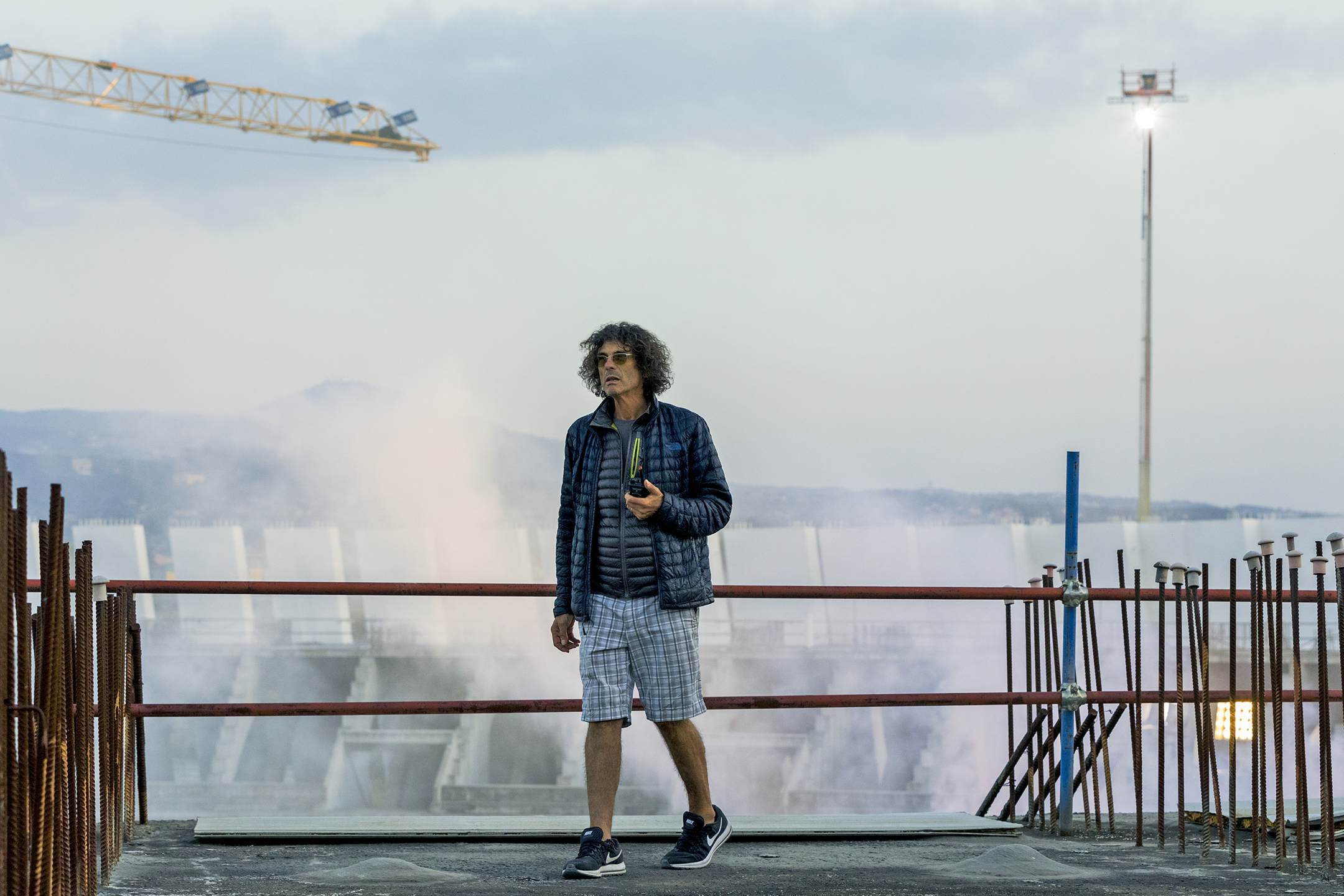
In 6 Underground, a former magnet magnate code-named One (“The Billionaire,” Ryan Reynolds) recruits a team of international operatives for a bold and bloody mission to overthrow the brutal dictator of a fictional Middle Eastern country. Bazelli describes the story as more character-oriented than what we’re used to seeing from Bay. The approach is typical of the director’s other films, but intensified.
Some of Bazelli’s early choices were simple: Bay shoots almost exclusively with Red cameras. “He has a lot of faith in Red, and no one is going to convince him otherwise,” says the cinematographer, who had up to that point only used the camera once, for an aerial photography job. After extensive testing with the then-new 8K Monstro sensor, “I found that it reminded me of a film look. Of all the digital cameras, the [Monstro] has a response to color and texture most like a printed film negative.”
The director and cinematographer readily agreed on shooting in anamorphic, but ran into a problem: shooting 4K anamorphic would lead to a 3.5K deliverable, and Netflix has a 4K minimum spec. For a solution, Bazelli approached VP of Optical Engineering and ASC associate member Dan Sasaki at Panavision in Woodland Hills, where the job was prepped. A couple of weeks later, Sasaki presented Bazelli with a set of T-series anamorphic lenses with new optical and mechanical elements that expand their coverage from 2700 x 2253 to 3709 x 3090 in the Monstro’s 8K 6:5 mode (at REDcode 5:1). The modifications yield a round, swirly bokeh and add slightly to the lenses’ focal length, slowing them down by an 1/8th of a stop and bringing their close-focus distance below 2’ across the board. A set of spherical Vantage One T1 lenses were used for certain shots with the Monstro in 6K Full Frame mode (at REDcode 4:1).

There’s no camera hierarchy on Bay’s sets, Bazelli explains: A normal action scene is shot with three cameras on similar angles, but each with a different vibe. Two of the cameras were operated by Roberto De Angelis and Lukasz Bielan, and a third — a custom-built lightweight Day-Glo green Red Weapon with 8K Helium sensor — was handheld operated by Bay. Although the director operated often, if not daily, the camera department also included “C” camera operators John Gamble and Roberto Ruzzolini.
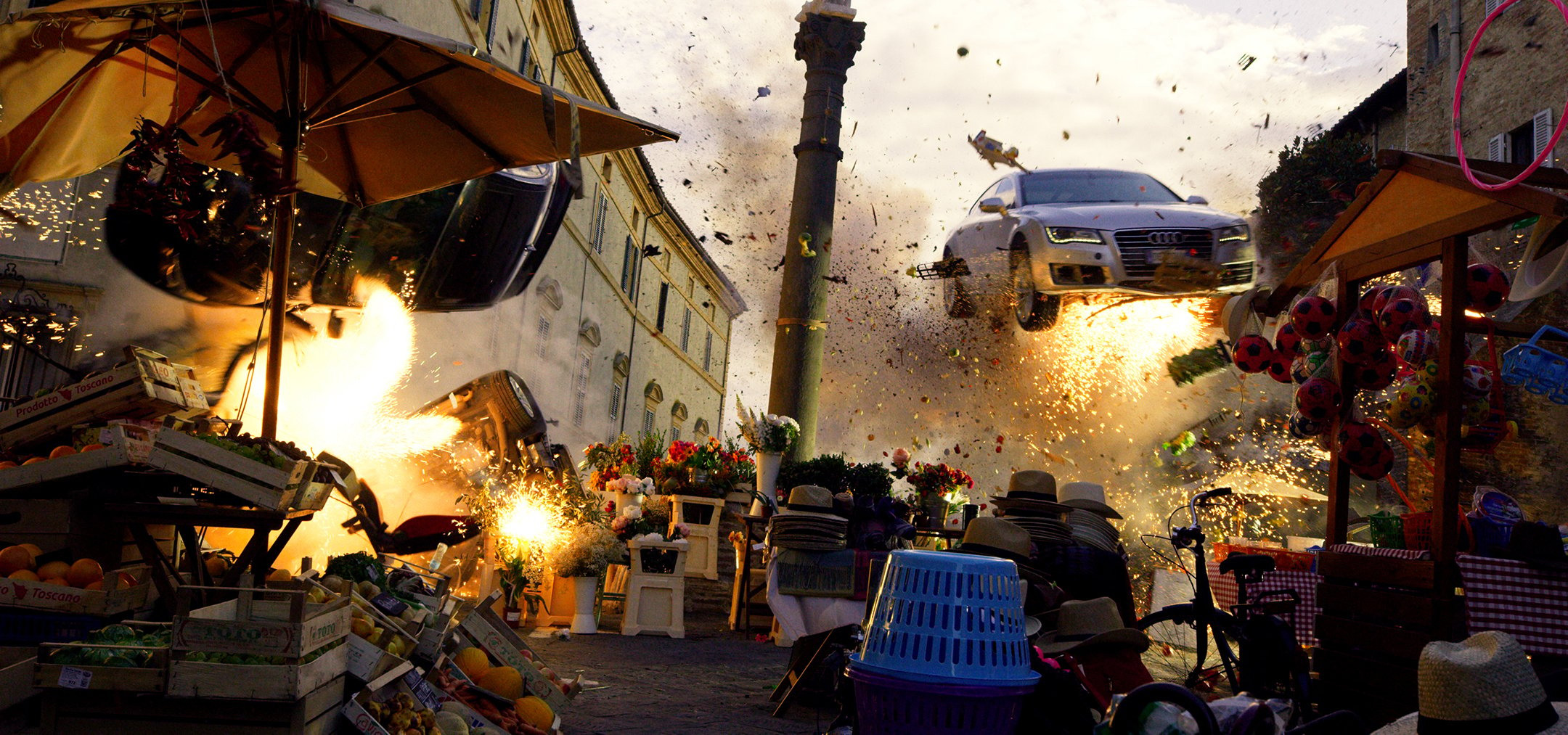
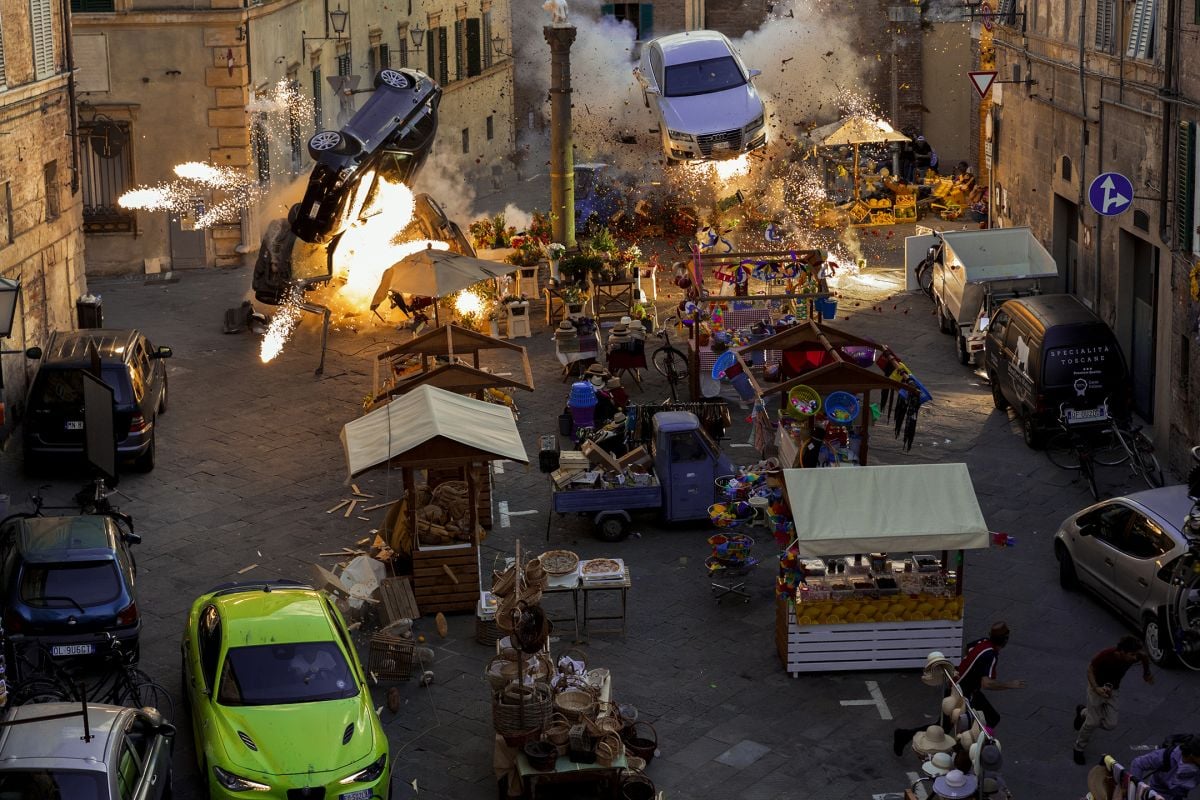
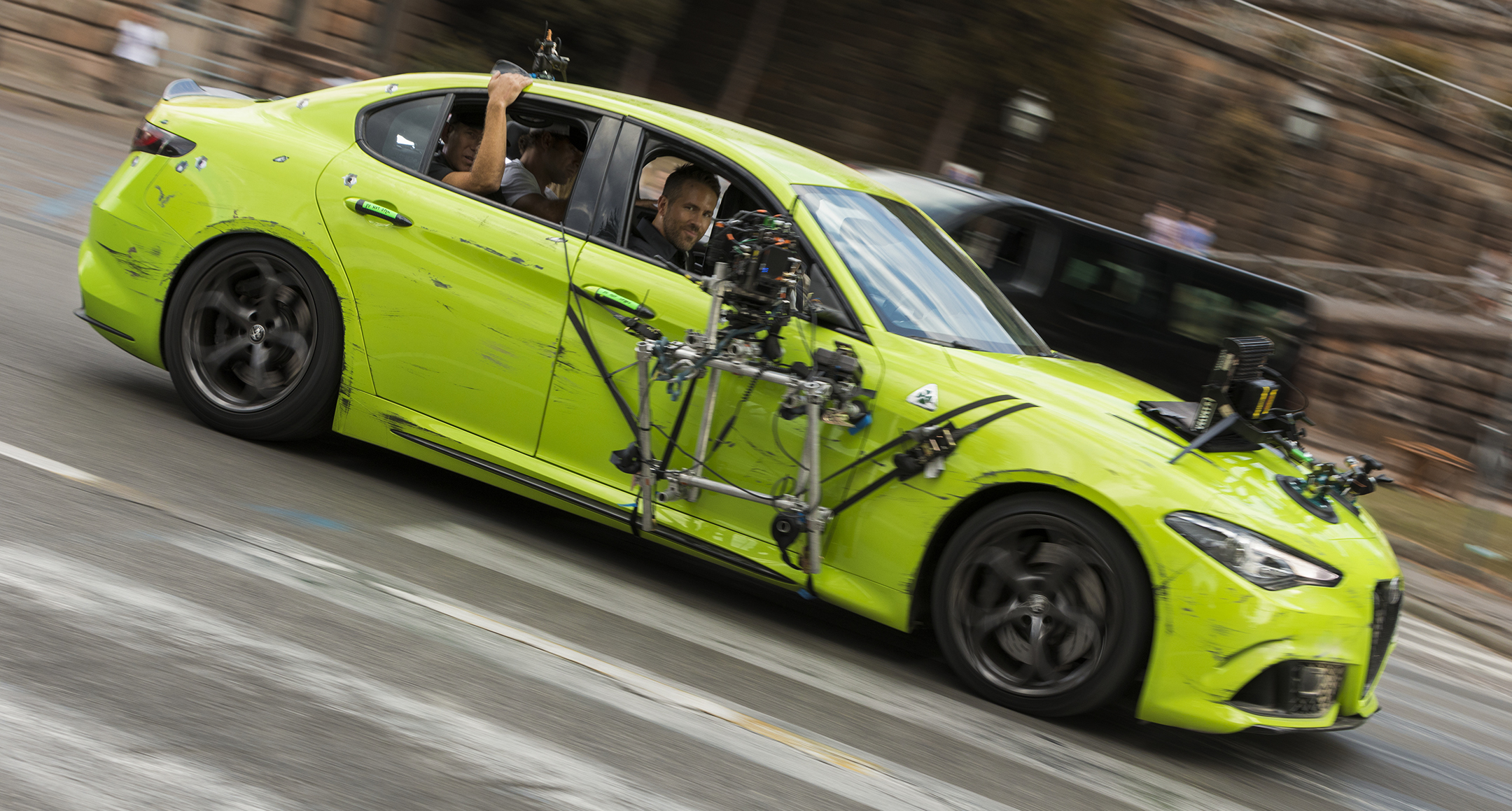
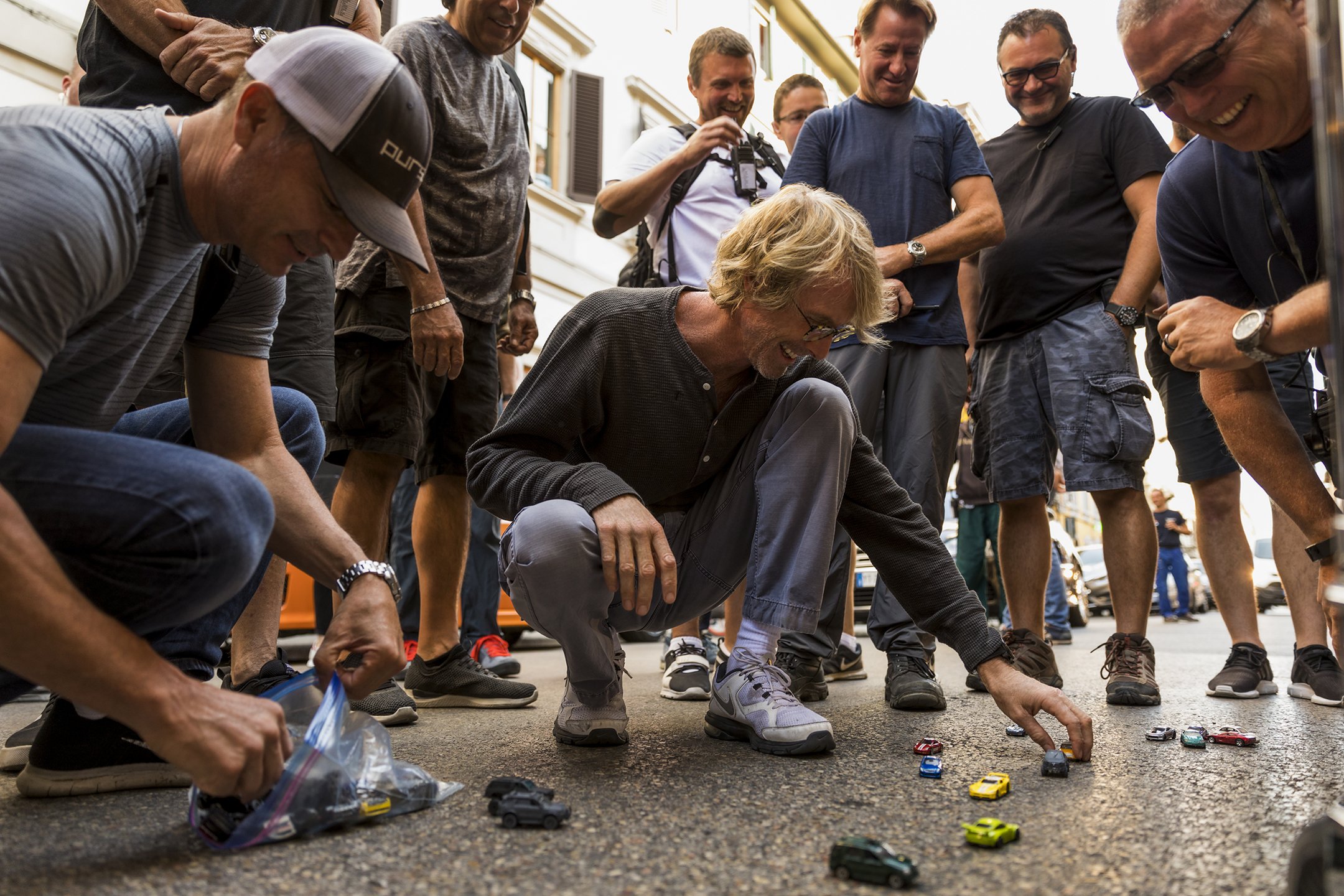
“Each operator has a different response to the same task,” says the cinematographer. It all coalesces into the director’s trademark “Bayhem” style of crash zooms and whip pans. In some cases, the remote head gyrostabilizers were turned off, because “Michael doesn’t like his camera moves to be too smooth,” says key grip Darren “Dutch” Holland.
For wide, sweeping shots of the action, as well as tracking shots, Bazelli employed 50’ and 75’ Technocranes with a Libra Mk VI head. For the film’s quiet character moments, he took a more classical approach to framing and camera movement atop a slider, Chapman Hybrid Mk IV or Peewee III+ dolly.
Up to eight Red cameras were used for the more extensive action sequences, as well as smaller-format crash cameras like the GoPro Hero, Sony a7s and iPhone X. With as many as 120 camera setups on a heavy day, Bazelli estimates a shooting ratio around 800 to 1, “considering that every day we delivered about 8 to 10, sometimes 12 hours of footage — never less than 5 — for 70 shooting days.” The approach is classic Hollywood studio filmmaking on steroids, as production is optimized for maximum coverage and the film itself is effectively made in the edit bay (a heroic undertaking by Roger Barton, William Goldenberg and Calvin Wimmer).

To facilitate this approach, movie lights aren’t allowed anywhere near the action unless they’re part of it. “Whenwalking onto one of Michael’s sets, the only things one should see are the actors and the cameras,” Bazelli remarks. He and gaffer Martin Smith made a plan to surround themselves with remote LRX 18k HMIs and Chroma-Q Brute Force units — the LED equivalent of a Wendy light — on condors positioned far in the distance.
Wireless control was achieved with Lumen Radio’s CRMX protocol via Cinelex SkyNode receivers. An on-set PC console was used for portable, lightweight control, while more complicated lighting configurations (such as the Calatrava set outside Rome) called for a grandMA2 Full Size with two additional Network Processing units running on a large Gigabit Ethernet network manned by dimmer operator Dan Walters.
Lamp exposure was monitored by eye to a T2.8 or T4 in the daytime, accounting for anamorphic lens performance. Nights were lit to a T5.6, but Bazelli’s shooting stop could be anywhere between T2.8 and T11 — set with IRND filters or wireless iris control — to account for the depth of field differences between lenses. “If you want the same closeup on a 25mm and 50mm lens, the 50mm at a higher stop will look like the 25mm at a lower stop,” he explains. “I don’t particularly like blurry backgrounds; it takes you out of the environment, even if the shots are quick.”
Once the basic exposure was set, Bazelli added whatever stylistic flourishes he thought would best capture the director’s interest. “It could be a tiny detail or a big brushstroke, anything out of ordinary, as long as it fits within Michael’s style. If it looks good and serves the purpose of the scene, no one will question it.” Mirrors, bounce cards and Aladdin Bi-Color A-LITEs or Cineo Matchstix hand-held by Smith and best boy Lee Eldred were used to create lens flares and bright highlight kicks, but otherwise there was little difference in lighting between the wides, mediums and closeups.
Production got underway in mid-July 2018 with a weeklong pre-shoot in California’s Mojave Desert, Los Angeles and Castaic. (The production also had pre-shoot days in Rome and Florence, Italy, plus eight micro-shoot days in Florence.) Principal photography began on September 5, 2018 in Siena, Italy, with the 18-minute non-stop car chase that opens the film. In it, our heroes burn rubber across the Tuscan capital in a Day-Glo green Alfa Romeo Giulia Quadrifoglio, with mafia thugs in hot pursuit. The scene is pure adrenaline, with super-charged sports cars and SUVs hurtling through the air mere inches from Renaissance-era Gothic structures and speeding down narrow alleys only ever intended for pedestrian use.
Bazelli marvels at the technical skills of stunt coordinator Gregg Smrz’s driving team — which included Smrz’s son Brett doubling for Dave Franco’s Six (aka “The Driver”) — along with champion drifters James Deane, Fredric Aasboe, Joachim Waagaard and Mark Higgins, additional stunt coordinator Kenny Bates, aerial coordinator and pilot Fred North and the special effects crew supervised by Terry Glass: “It’s amazing how everything is timed: helicopters come out, the cameras are set and then a bunch of cars do this chase that ends with a big flip and an explosion. The margin of error is almost zero.”
With this in mind, and a healthy dose of skepticism, Bazelli, production designer Jeffrey Beecroft and Italy supervising location manager Enrico Latella submitted their requests to Florence city officials early in pre-production. Several key locations were still in question mere days before shooting commenced, but, ultimately, the production was granted almost everything they asked for, including access to the roof of the Florence Cathedral’s 600-year-old dome.
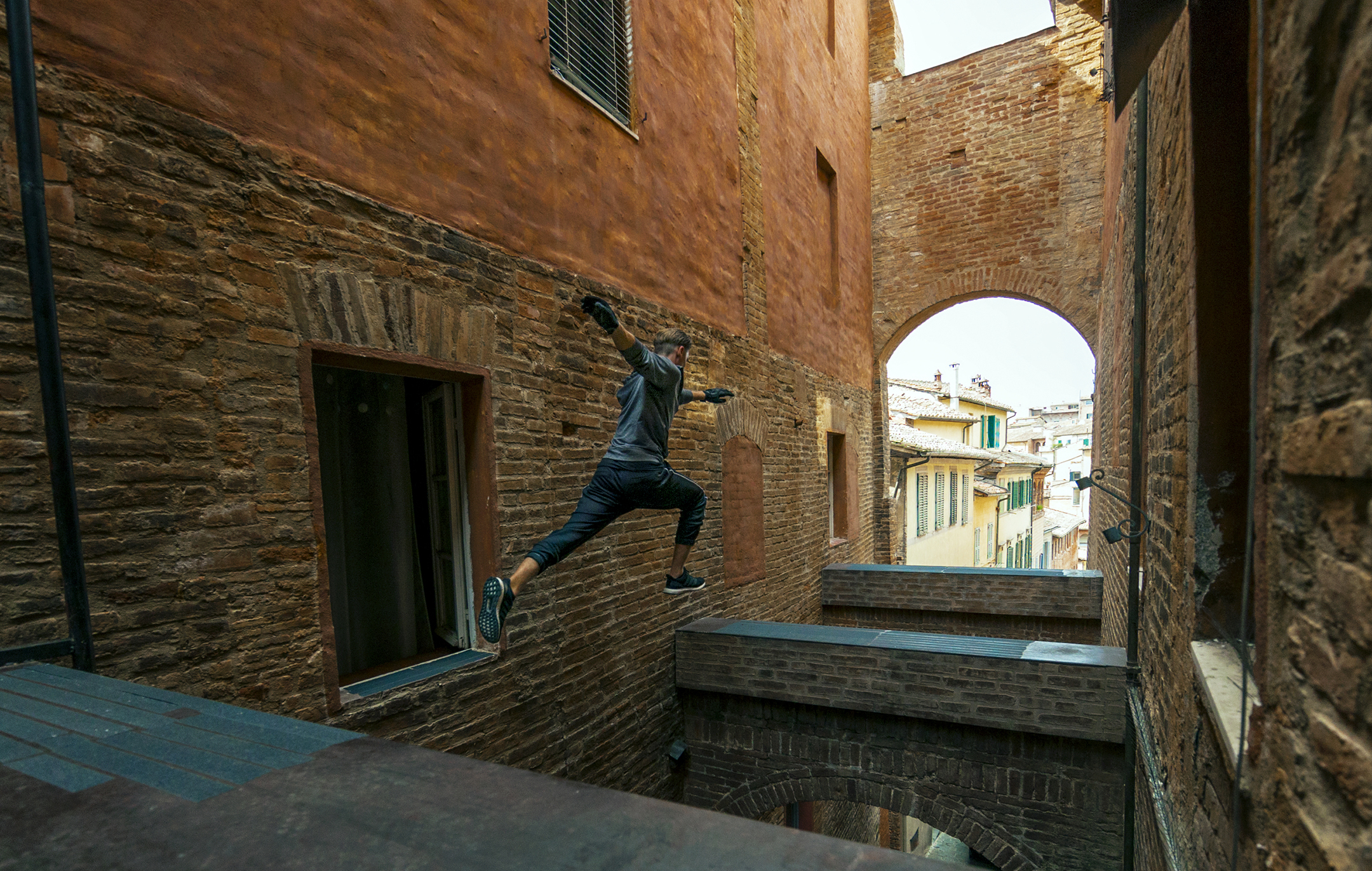
In this part of the chase, the traceur operative known as Four (“The Skywalker,” Ben Hardy; doubled by Storror parkour freerunners Drew Taylor and Benj Cave) runs down the side of the dome and follows the street-level pursuit from the rooftops. Bazelli, Bay, De Angelis and Bielan, 1st ACs EJ Misisco and Brad Peterman, along with two 2nd ACs, Dedicam drone operators Dyonis Frei and David Tiraboschi and a two-man stunt team were given access to the dome cupola for the two hours between sunrise and 8:00 AM, before the Duomo opened for tourists. Their equipment was pre-loaded the day before, 600 steps up a narrow spiral staircase.
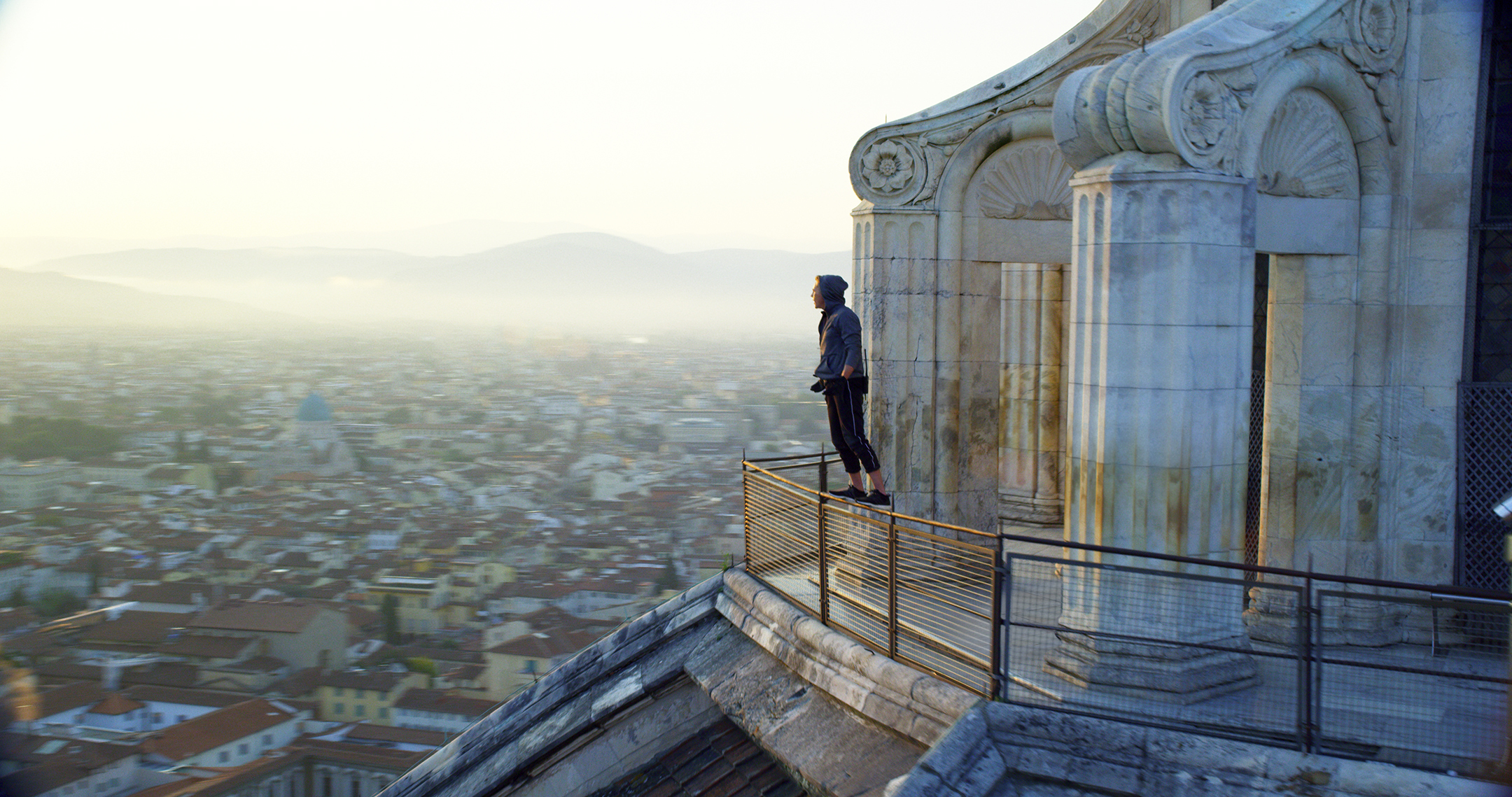
Bazelli recalls the early morning climb before emerging at the top of the dome just before the sun rises over Florence: “It’s a kind of spiritual experience, this moment of calm and quietude looking out over the city — then at 6:01 the chopper flies in, circles around the dome and someone screams ‘Action!’”
Smrz had everything pre-rigged with hitch points, allowing Taylor to run, then slide down the side of the dome while aerial cinematographer David B. Nowell, ASC circled around it. There was no place to hide in the cupola; the drone and helicopter shots were done simultaneously, and the crew was painted out later. Hardy’s close-ups and dialogue were captured last. “We got maybe 30 takes in two hours,” Bazelli estimates. “An hour later, we were laying down tire marks all over the streets below. It was unreal.”
Chase vehicles employed a Spanish arm and Flight Head or a Scorpio arm and head from Panalight Italy. (Later, in the UAE, main unit operator Guido Leonarduzzi employed an Ultimate arm and Spacecam Oculus head piloted by David Ambrosi.) Holland mentions that Bay didn’t want to see any large rigs — even a hostess tray — attached to his picture cars, “ratchet straps, adjustable arms and some suction cups are all it takes.”
Most of the chase was shot on the streets of Florence — Siena, Rome, Budapest, and Abu Dhabi played supporting roles — and involves a number of story beats inside the Alfa Romeo, so it was important to see the actors’ faces in situ, as Bazelli calls it. Inside the car, handheld Red cameras and a Sony Venice 6K (capturing 6K 3:2 in X-OCN ST) with the Rialto Extension System and Panavision anamorphic lenses were used to catch shots of Reynolds and Franco, as well as an emergency backseat surgery conducted by Five (“The Doctor,” Adria Arjona) on Two (“The CIA Spook,” Mélanie Laurent), who single-handedly takes out a seemingly endless array of pursuing assassins.
Occasionally, Bazelli ran out of day exteriors to shoot with time left in the day, so he would set up in nearby garages or industrial spaces to photograph process shots. It took a 40-person crew about five minutes to set up all the equipment — cameras, spinning mirrors, strobe lights, LED lights, HMIs and 5k Molebeams, gold and silver mylar — and jam the actors into the cars. “Michael can decide to do process work anywhere at any time, so we had to always carry this equipment everywhere we went,” says Smith. Bazelli describes the process look as “a little more crisp and contrasty with highlights. We didn’t worry about matching every location; we went for the dramatic and theatrical effect of shifting gears quickly or bullets being pulled out of a body.”
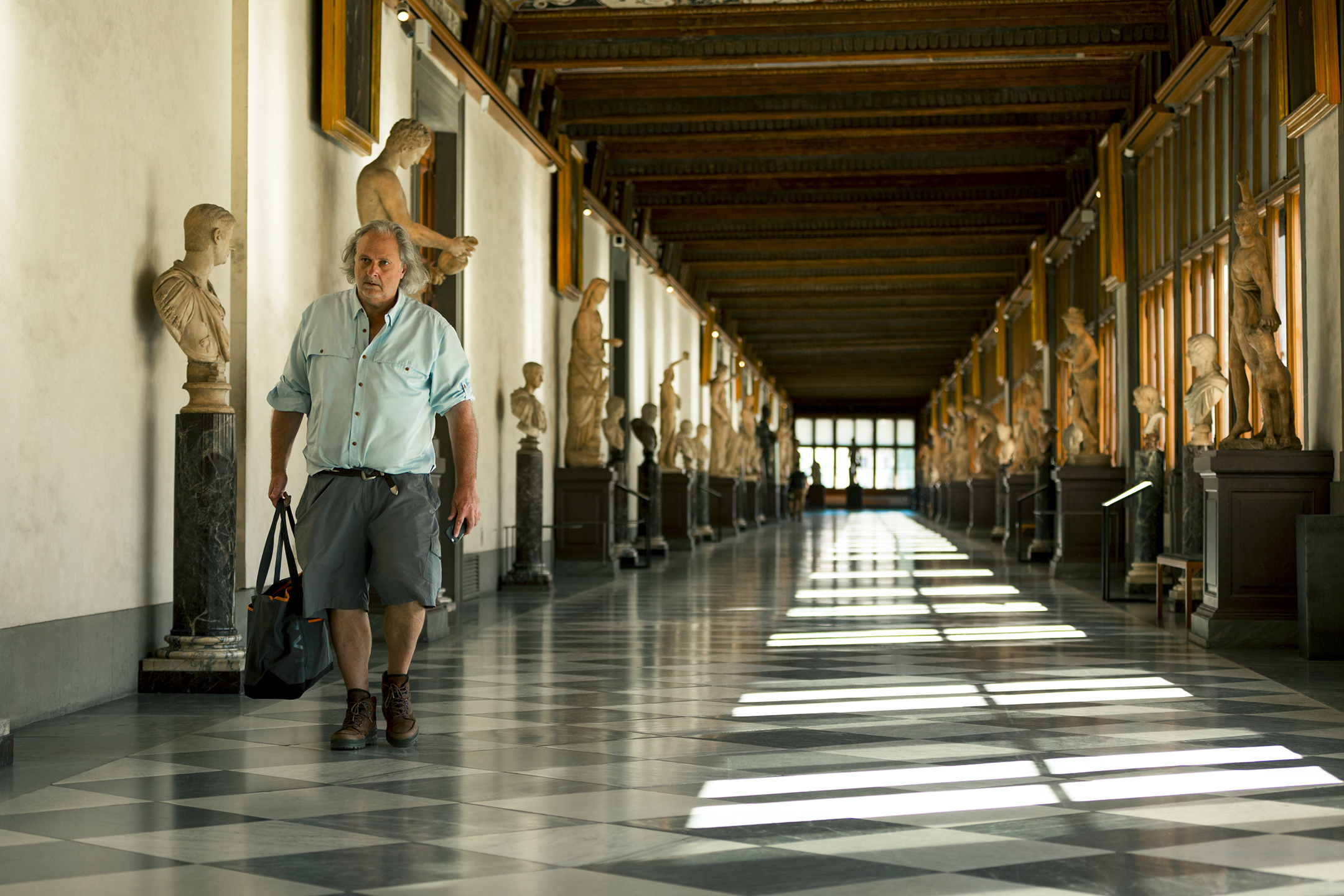
The only place in Florence the filmmakers didn’t get the access that they had hoped for was the Galleria dell’Accademia, home to Michelangelo’s David. The script includes a blast through the world-renowned Uffizi Gallery, with a stop in front of the Renaissance masterpiece — apocryphally located on the first floor — to scrutinize its more intimate details. The filmed sequence was shot at several different museums, including the Palazzo Medici Riccardi, Pitti Palace and the Palazzo Vecchio. At the Uffizi itself, actors were placed on apple boxes in a mocked-up slice of the Alfa’s cab and pulled along on a dolly. A similar approach was planned for the Galleria dell’Accademia, but the museum changed its mind at the last moment, so Beecroft commissioned a 5-axis 3D-printed foam replica of David for the wide shots, and a more true-to-life digital composite of the statue in its gallery was made for the characters’ POVs.
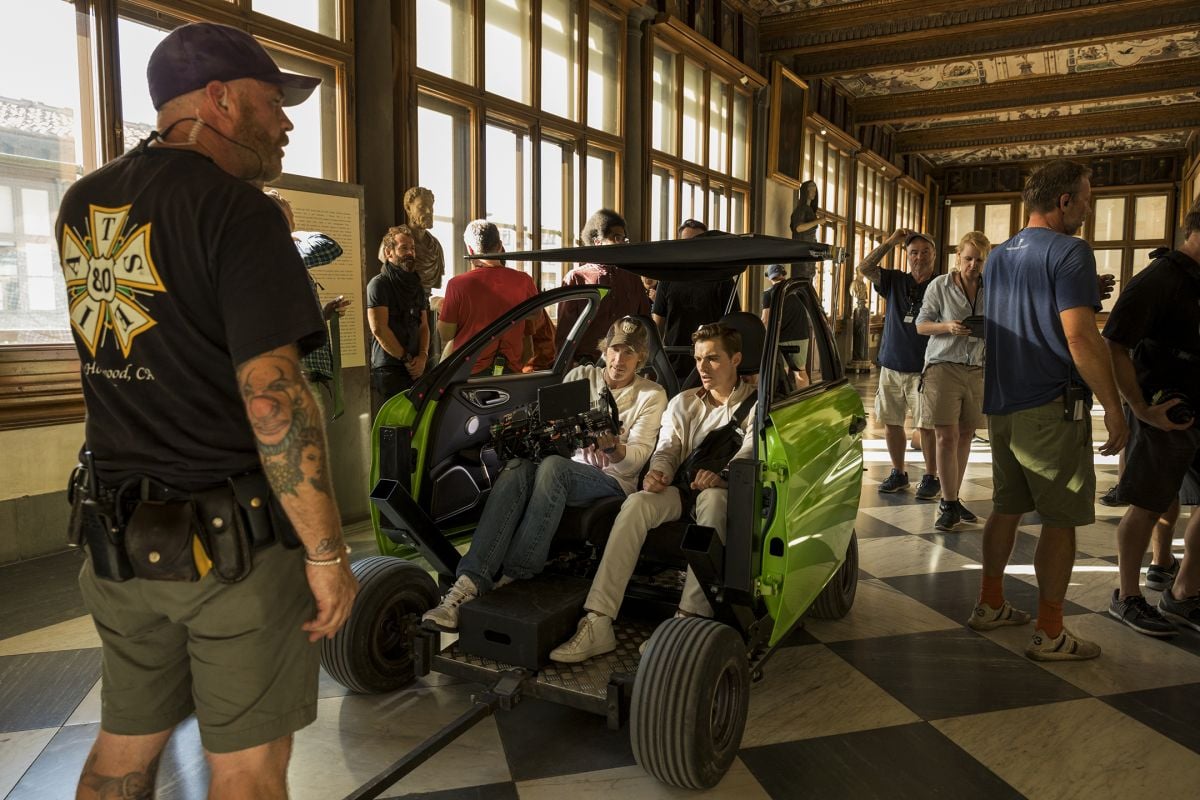
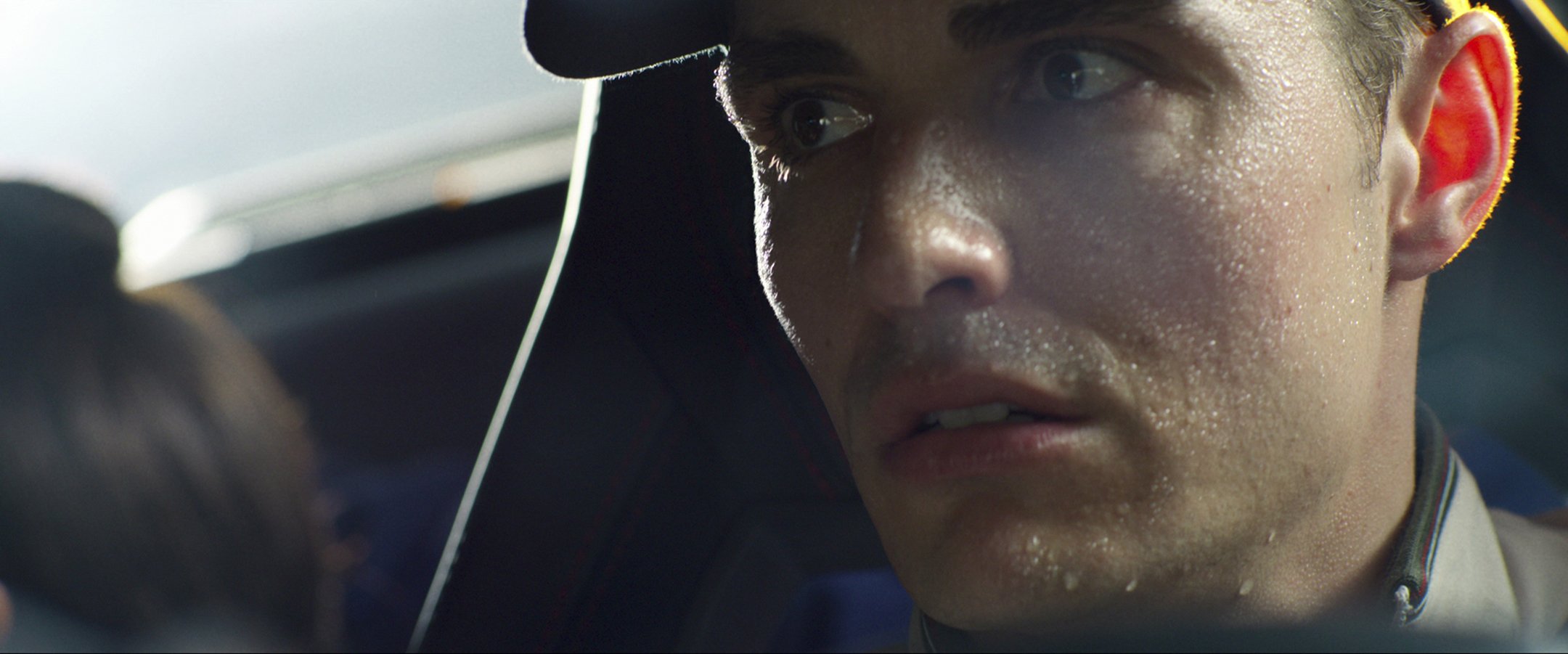
Bazelli doesn’t fault the museum for being cautious, but commends the crew for leaving no trace after 25 days in Florence. After Florence, a stripped-back main unit picked up scenes with Reynolds, Hardy, Arjona and Corey Hawkins (as new recruit Seven, aka “The Operator”) in Budapest, followed by Taranto — standing in for the port of the fictional country of Turgistan, where its dictator Rovach (Lior Raz) docks his superyacht, the Kismet — after which the rest of the production moved to Rome.
Pickups from the Las Vegas and Florence missions were filmed on stages at Cinecittà, and a performance of Shakespeare’s Richard III was split between the Teatro dell’Opera and the Grand Hotel Plaza, but the bulk of the shooting took place 25 miles outside Rome at the site of an abandoned sport complex designed by Spanish architect Santiago Calatrava.
Originally conceived as the anchor of a sweeping green commons for University of Rome Tor Vergata, all that remains of the Città dello Sport is the sun-bleached metal skeleton of a sweeping shark’s fin dome and its weathered concrete guts next to a derelict open-air stadium. The production utilized this site for 22 different sets, including a portion of the Florence car chase, a slice of the Duomo, interiors for the operatives’ desert hideout, a full-sized replica of Rovach’s 180’, four-story Kismet and the posh, Hong Kong penthouse where Rovach holds his brother and political rival Murat (Payman Maadi) hostage.
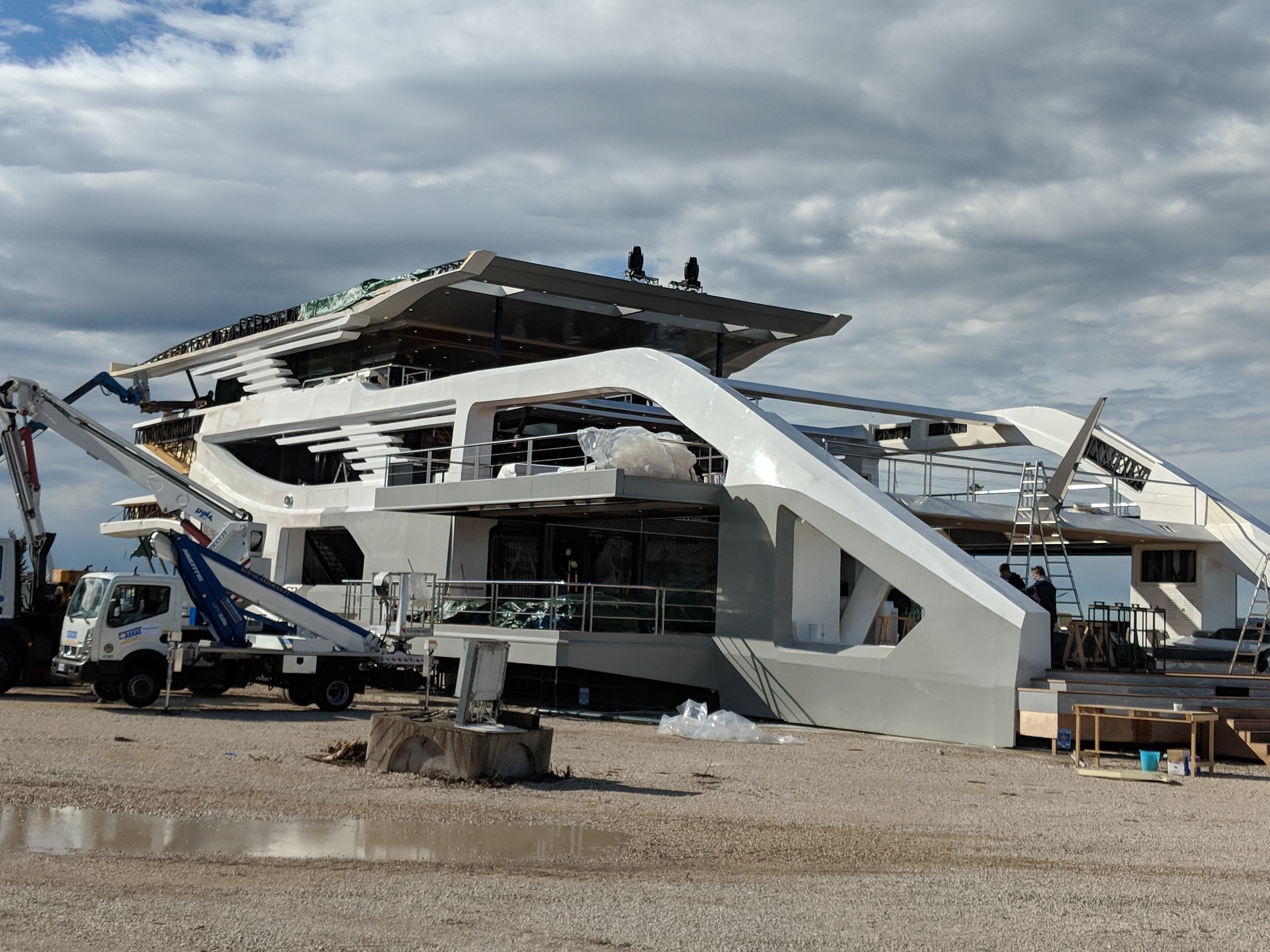
Bazelli worked closely with Smith, practical rigger James McGee, Beecroft and set decorator Jille Azis to incorporate much of their lighting into the sets. All of the fixtures in the yacht and penthouse were real and utilized hundreds of individual circuits of high IP-rated (watertight) LEDs, all programmable from the lighting desk. Outside the yacht, Bazelli used 18k Arrimax HMIs to push daylight through its tinted windows.
Beecroft wanted to build the penthouse next to Calatrava’s fin, says Bazelli, because “it’s cheating whether we do it with the Calatrava or with a digital backdrop, but when you have a real structure immediately adjacent to the windows and you see it actually reflected in the set, your cheat is so much more effective.” Raynault VFX in Montreal integrated the penthouse into Hong Kong’s existing skyline for the wide establishing shots, while on set, graphics displayed on large LED screens were reflected from off-camera in the penthouse’s windows to further sell the idea that the five-story glass, steel and stone set is surrounded by other high-rise buildings.

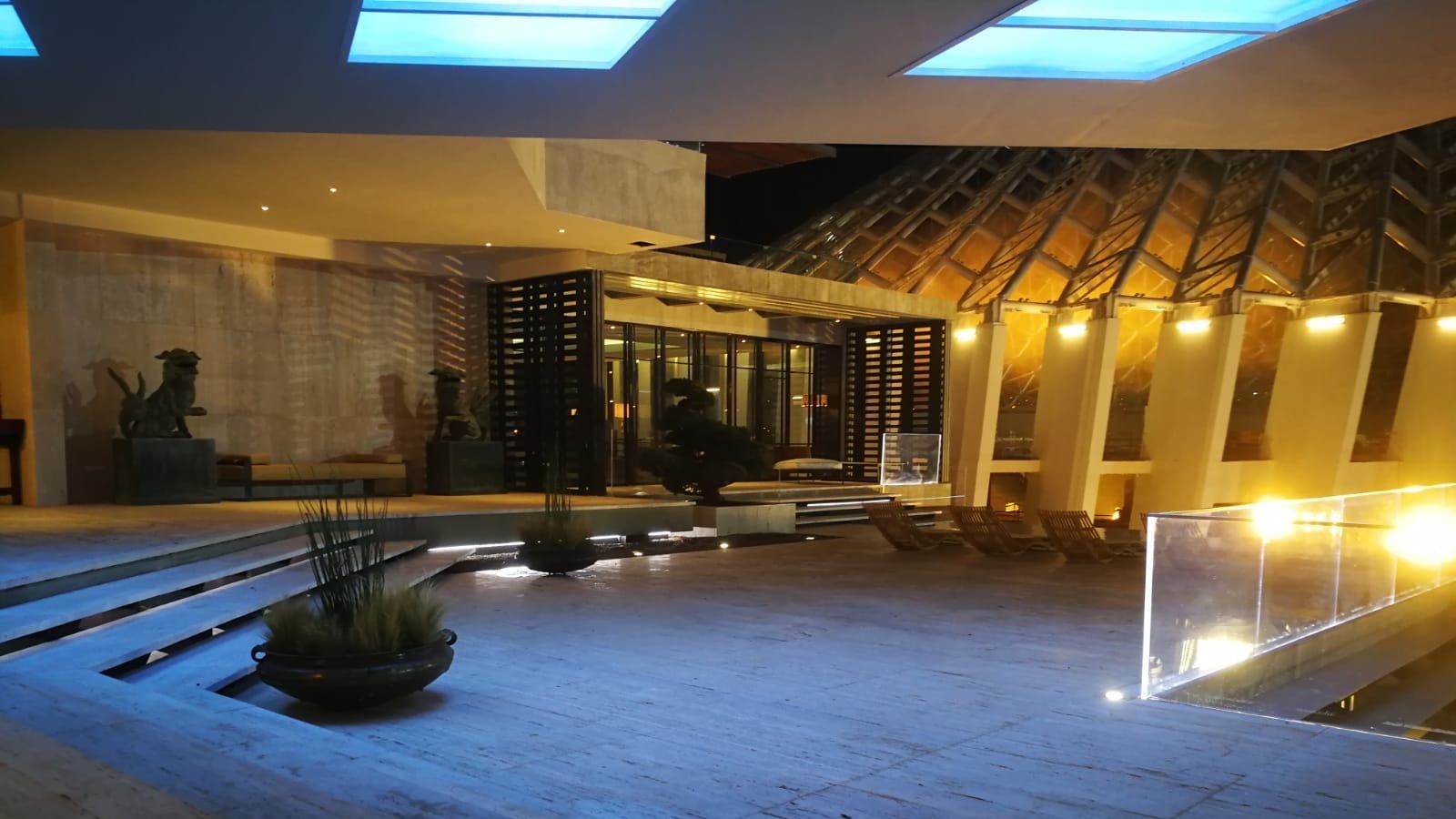

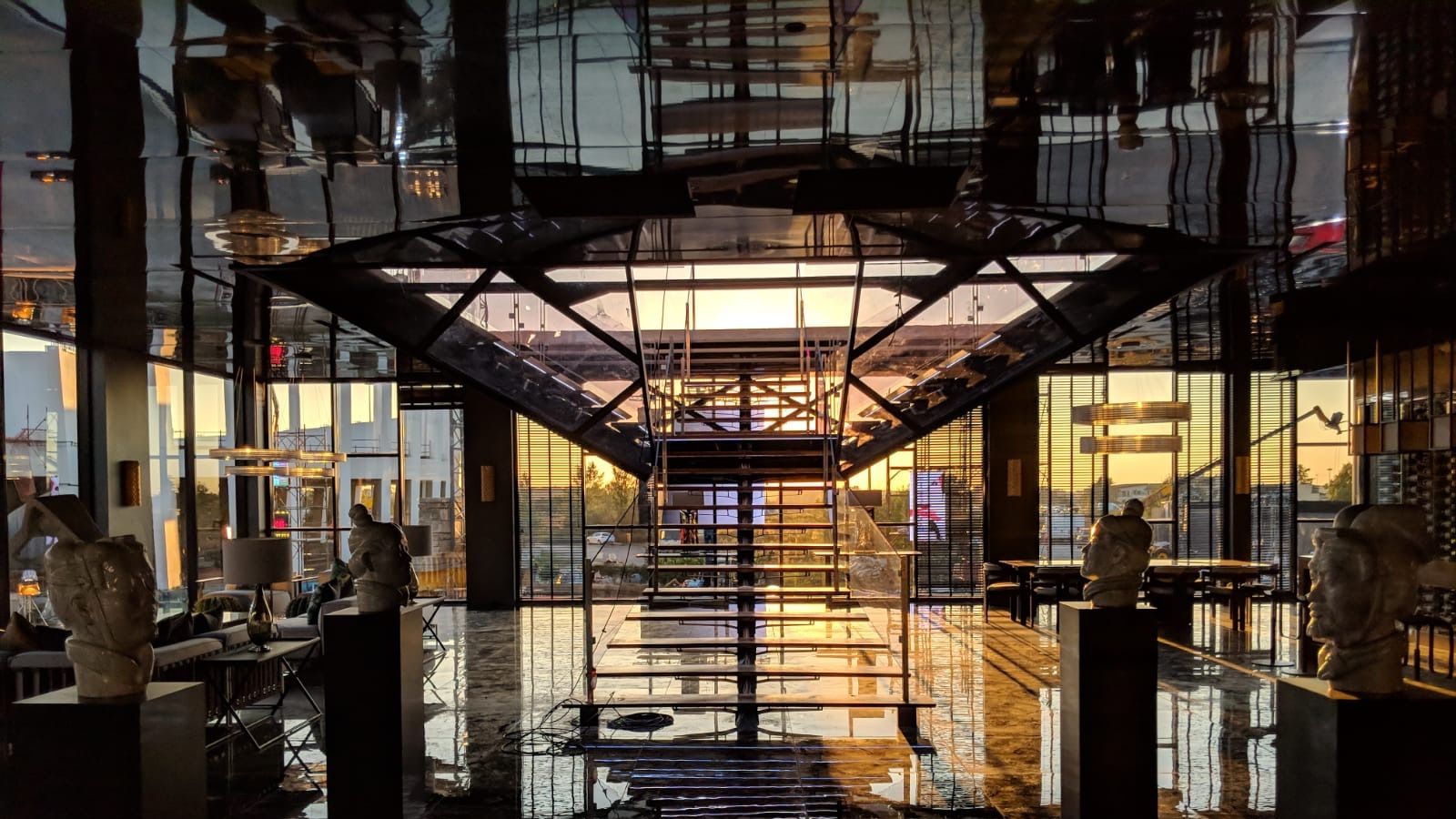
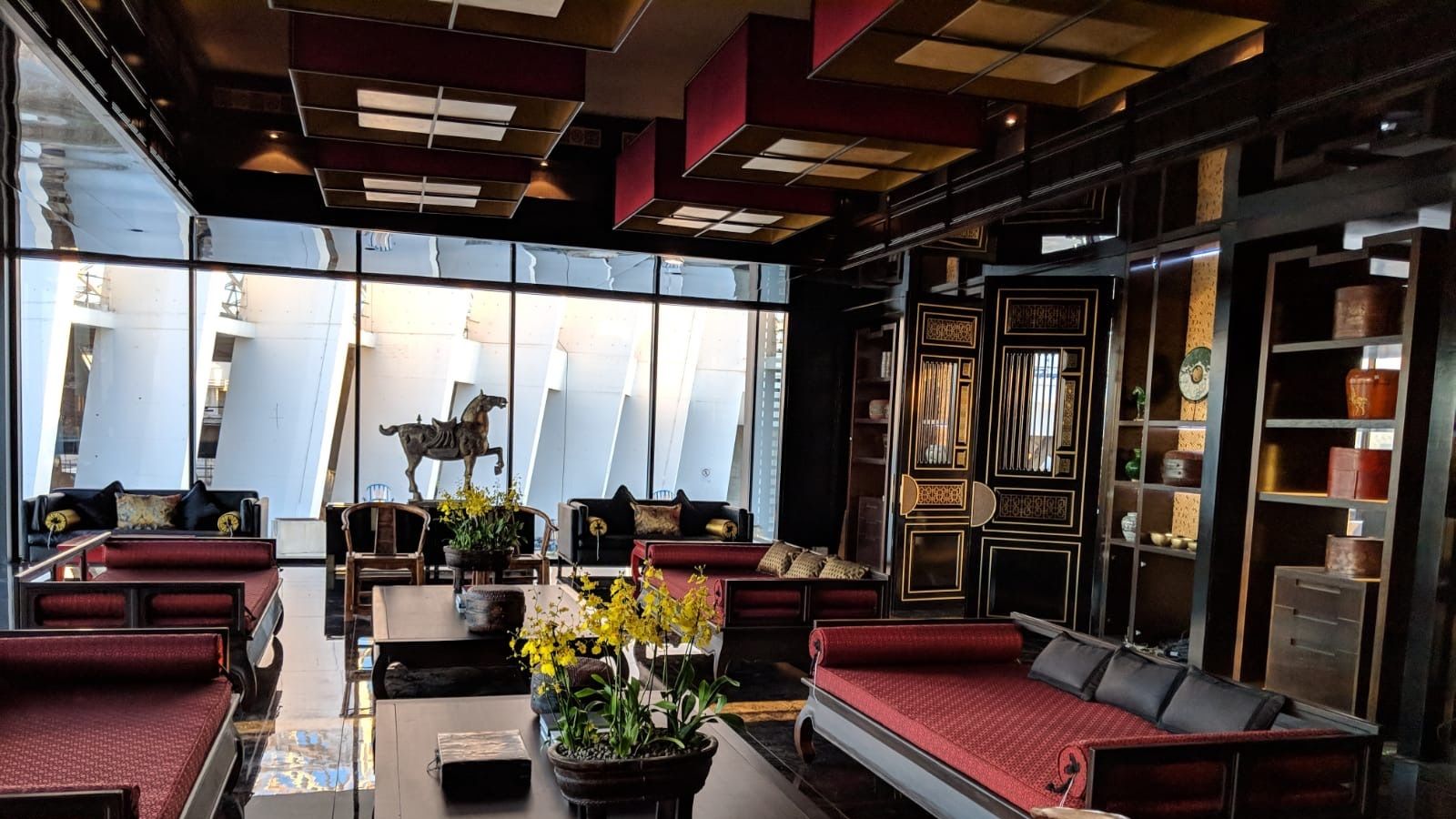
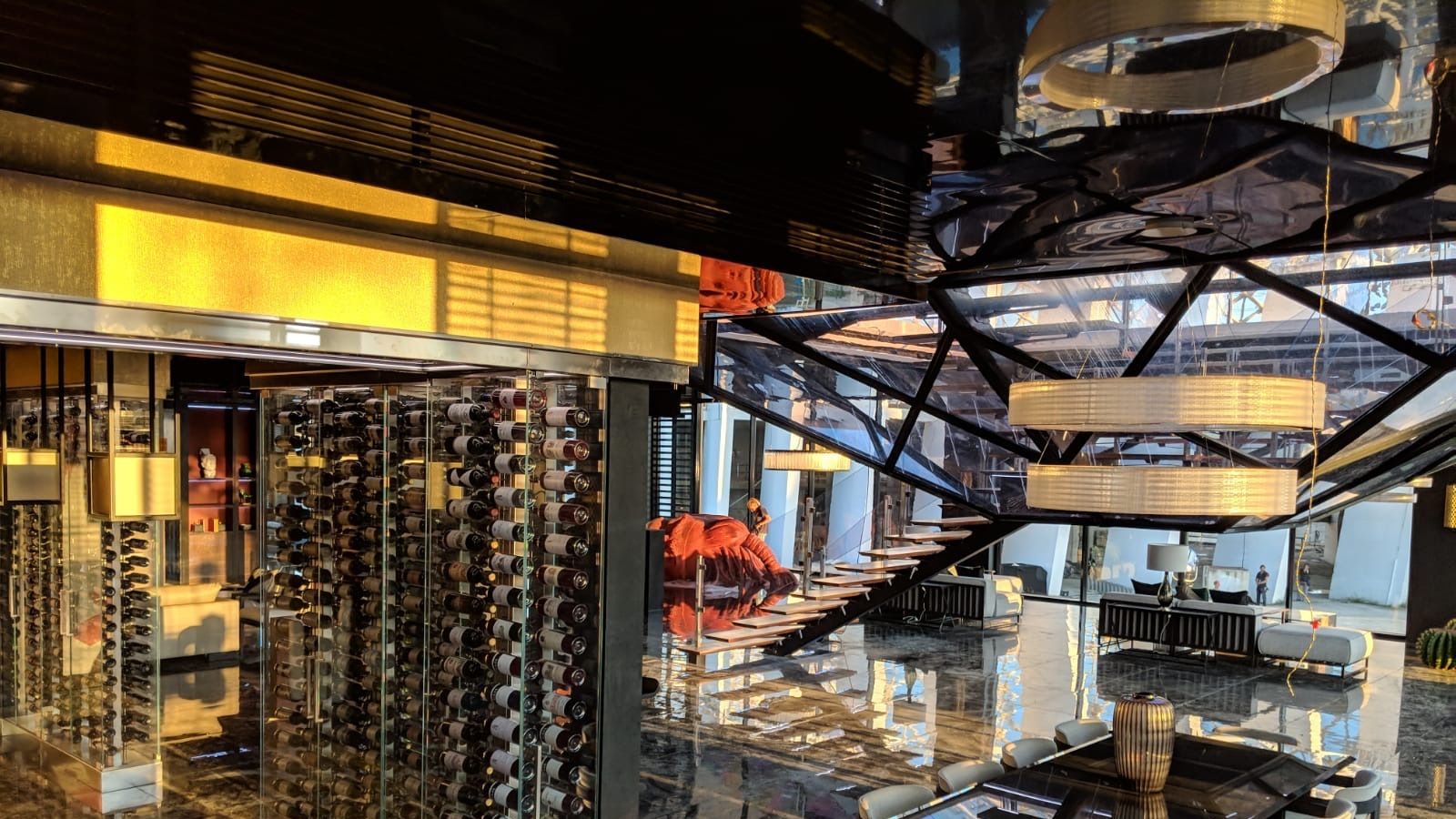
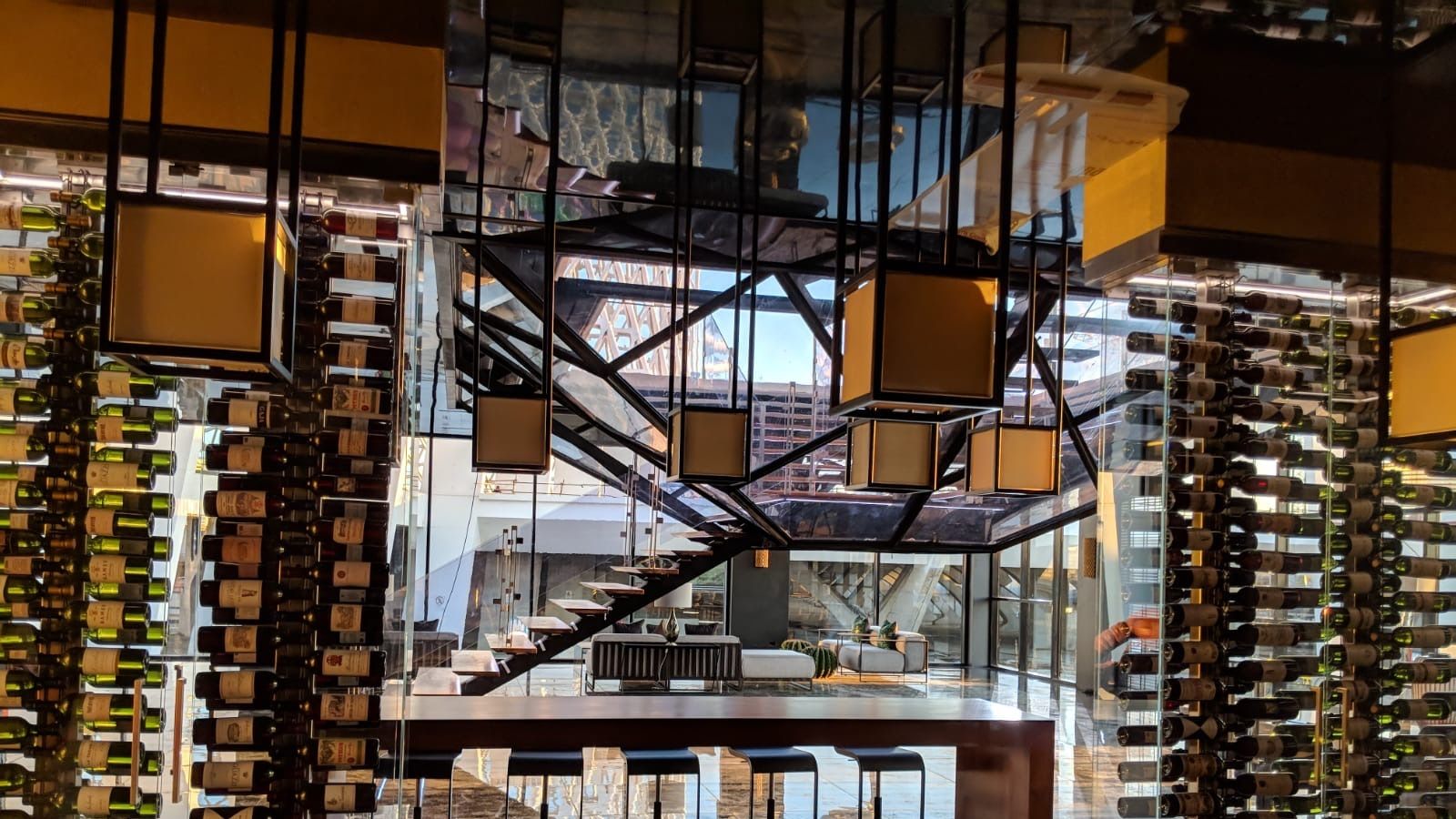
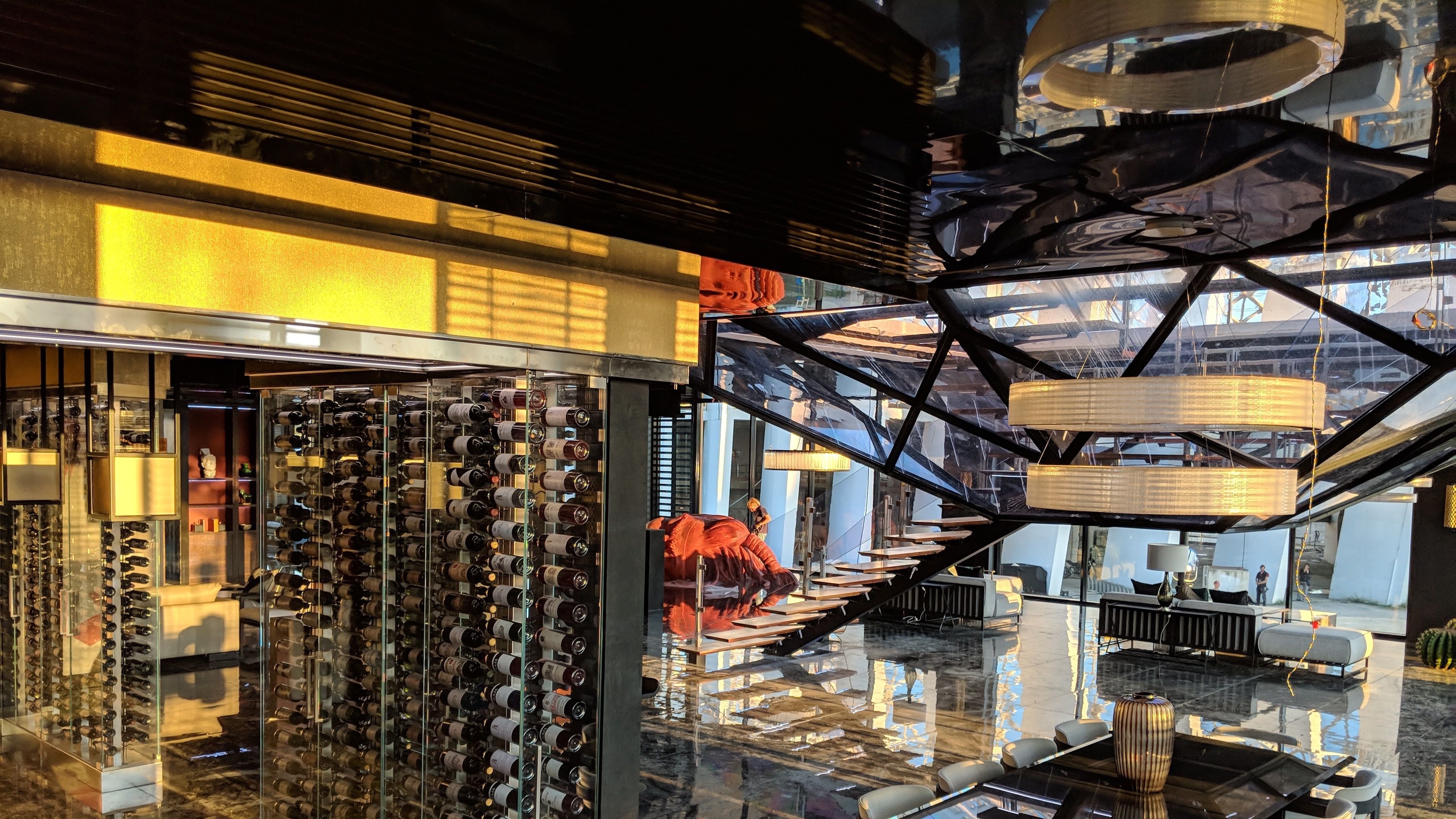

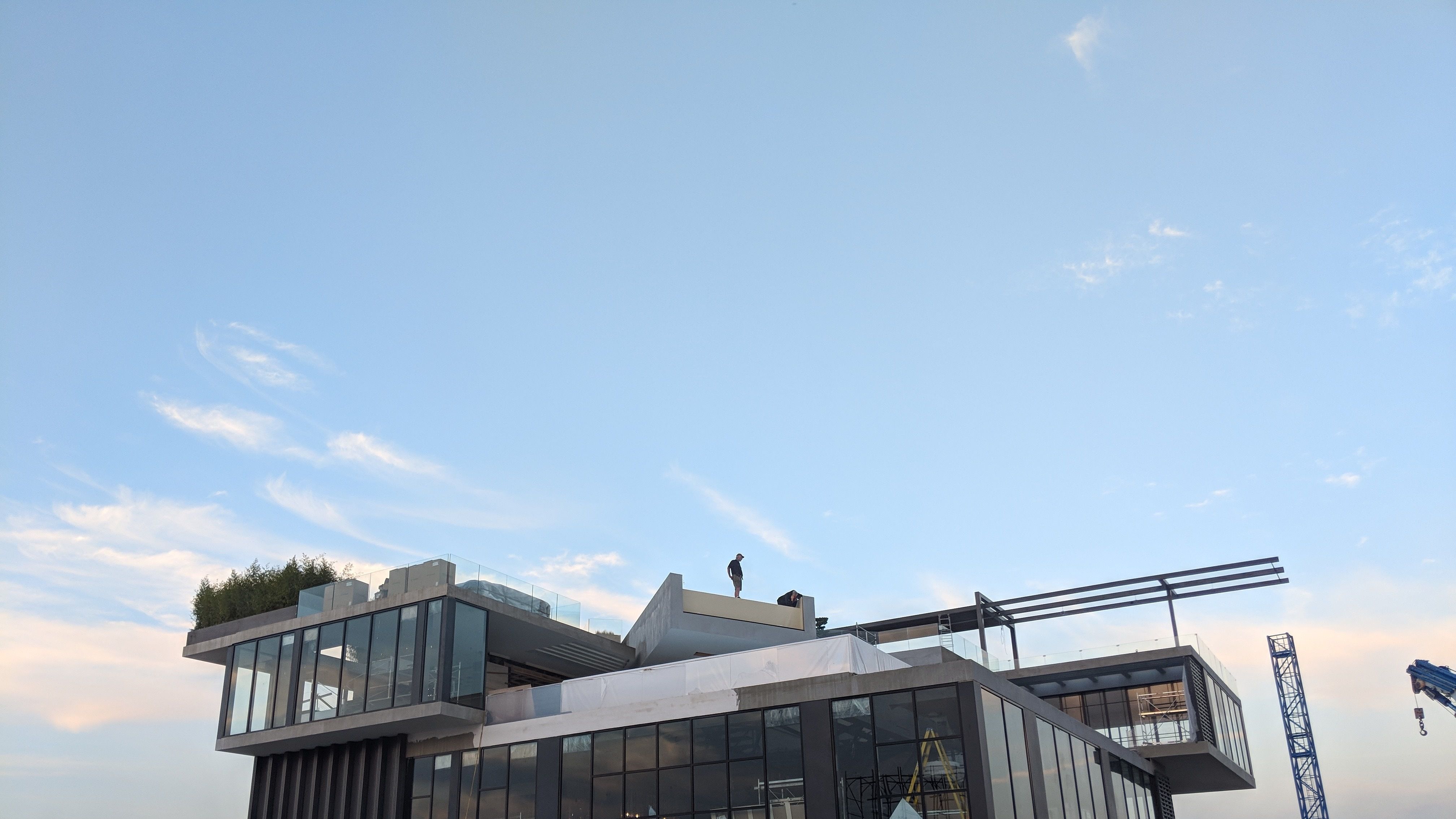

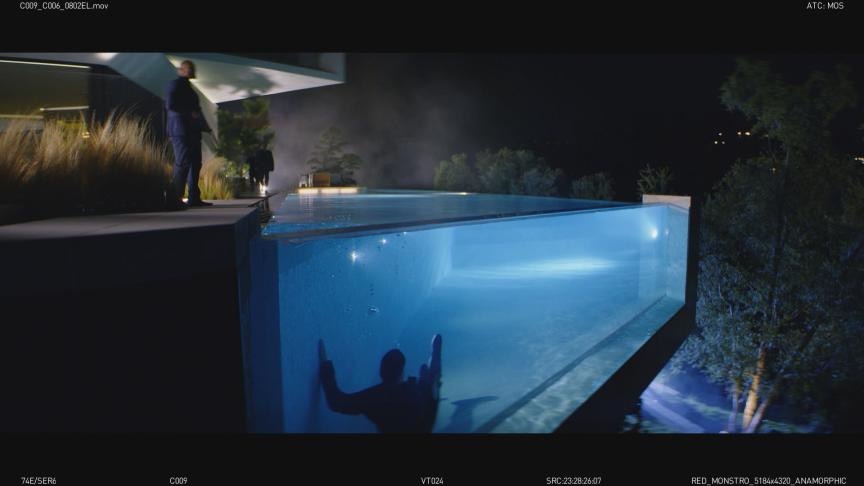
The same approach was used in the sequence where the penthouse’s glass infinity pool is shattered in a rescue operation led by Two, Three (“The Hit Man,” Manuel Garcia-Rulfo) and Seven, dumping millions of gallons of water through the apartment. “We actually did dump millions of gallons of water through the set,” says visual effects supervisor Richard Hoover, who tasked the visual effects artists at Scanline VFX Munich with CG water augmentation. “Thanks to all the real water we shot, the digital augmentation is seamless,” he adds.
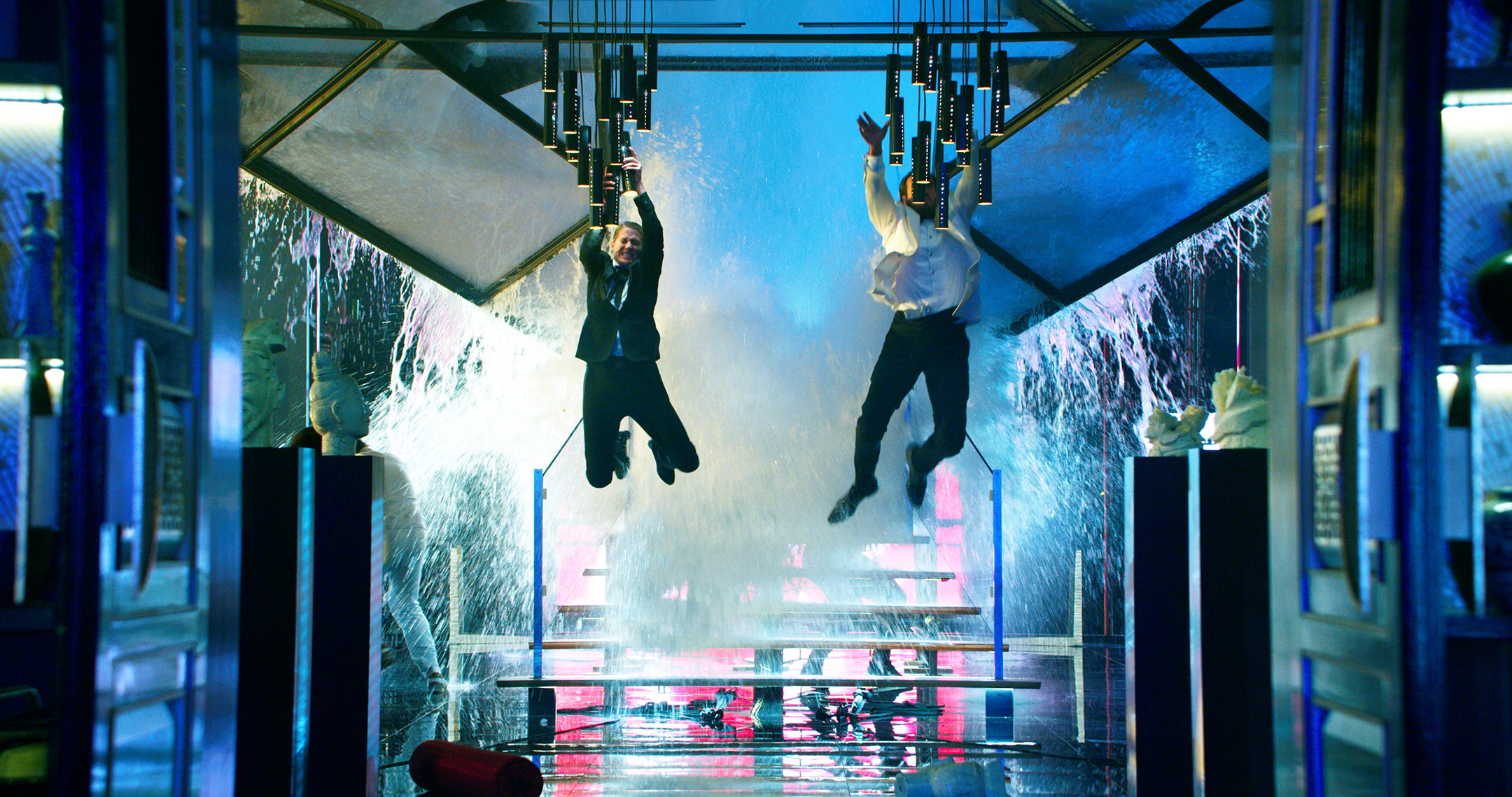
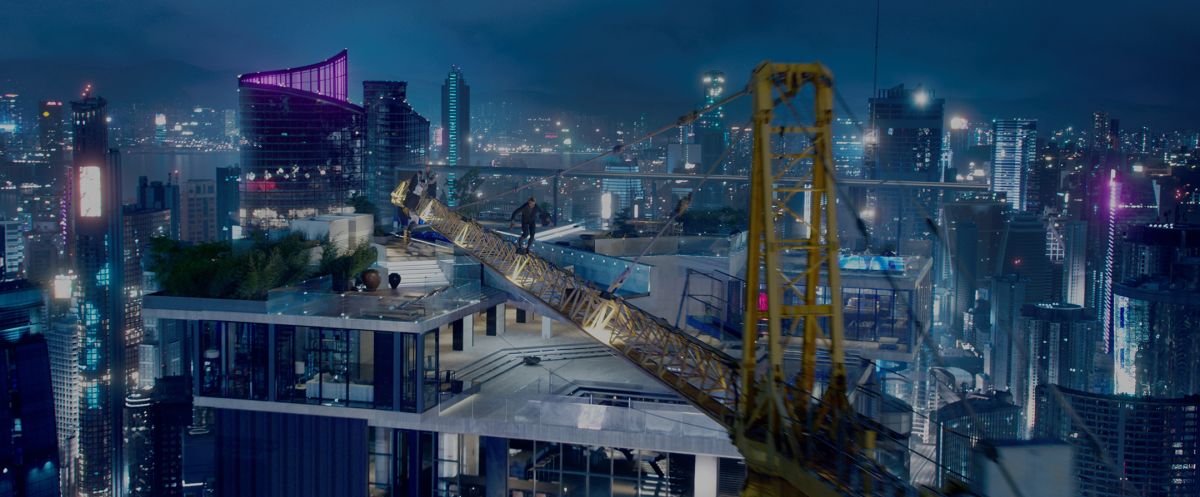
Bazelli and Beecroft had the yacht and penthouse sets oriented to take advantage of a southwesterly backlight during the day, and the cinematographer reckons the fin structure “was one of the most extensive lighting setups I’ve done in my career.” The stadium was lit with dimmable practical florescent tubes, and LRX 18k HMIs and Brute Force LEDs rigged to cranes. Where it wasn’t possible to run cables, Smith and rigging gaffer Greg Thomas used long-range 5Ghz point-to-point wireless dishes to bridge gaps in the network.
Only by doing the extra work to build his lights into the set — or hide them from it — does Bazelli ensure that he will make his ambitious days. “We shot splits, so we got the best of the light: interiors at 10 or 11 in the morning, then outside at 3:30 or 4 in the afternoon,” he reports. “We were there from October to the middle of November, so the sun was lower in the sky. When we shot at dusk, the sky was a beautiful cobalt blue. At night, all the big lights are turned on, tweaked and balanced. It’s a big operation and you’re supposed to do everything in half the time.”
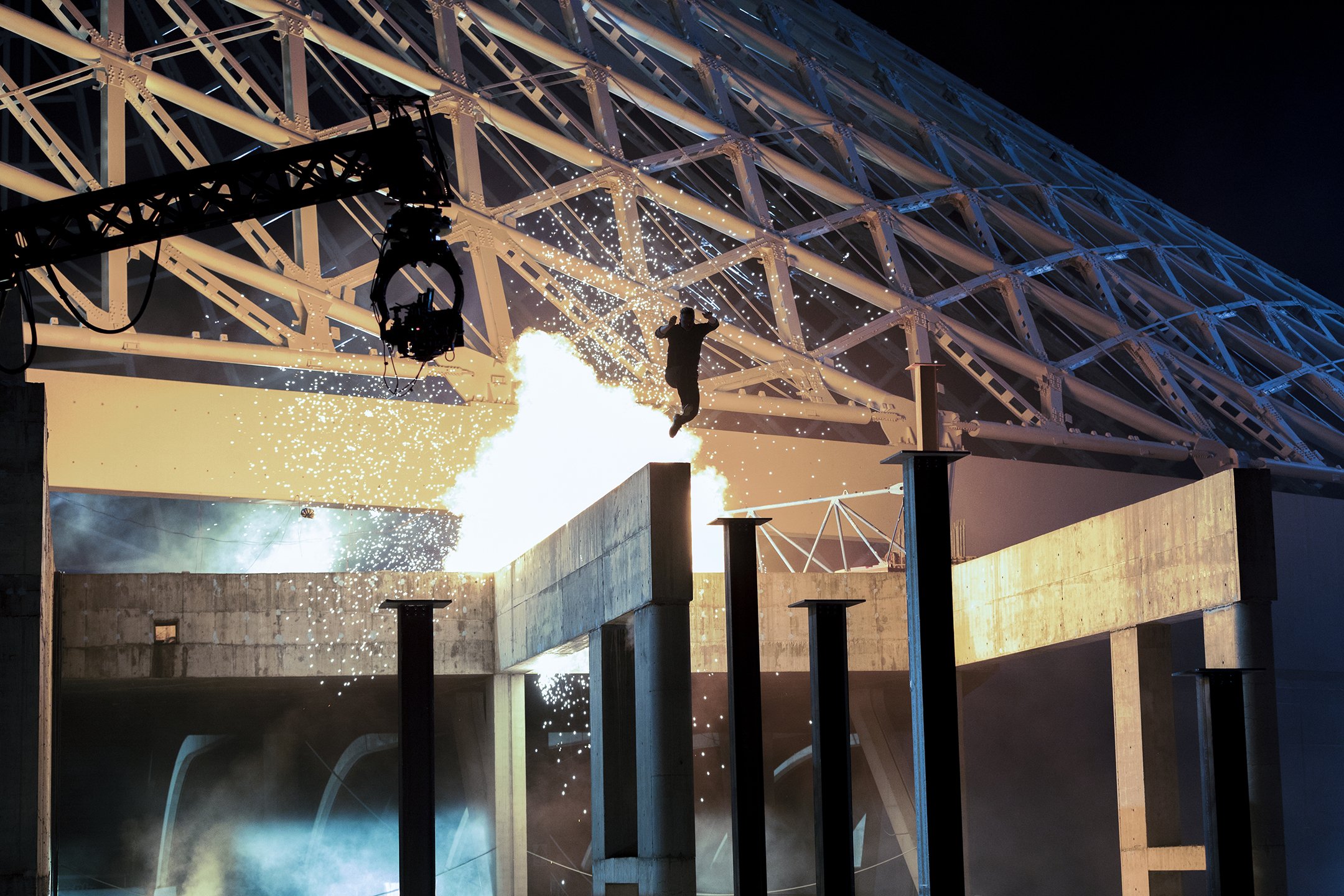
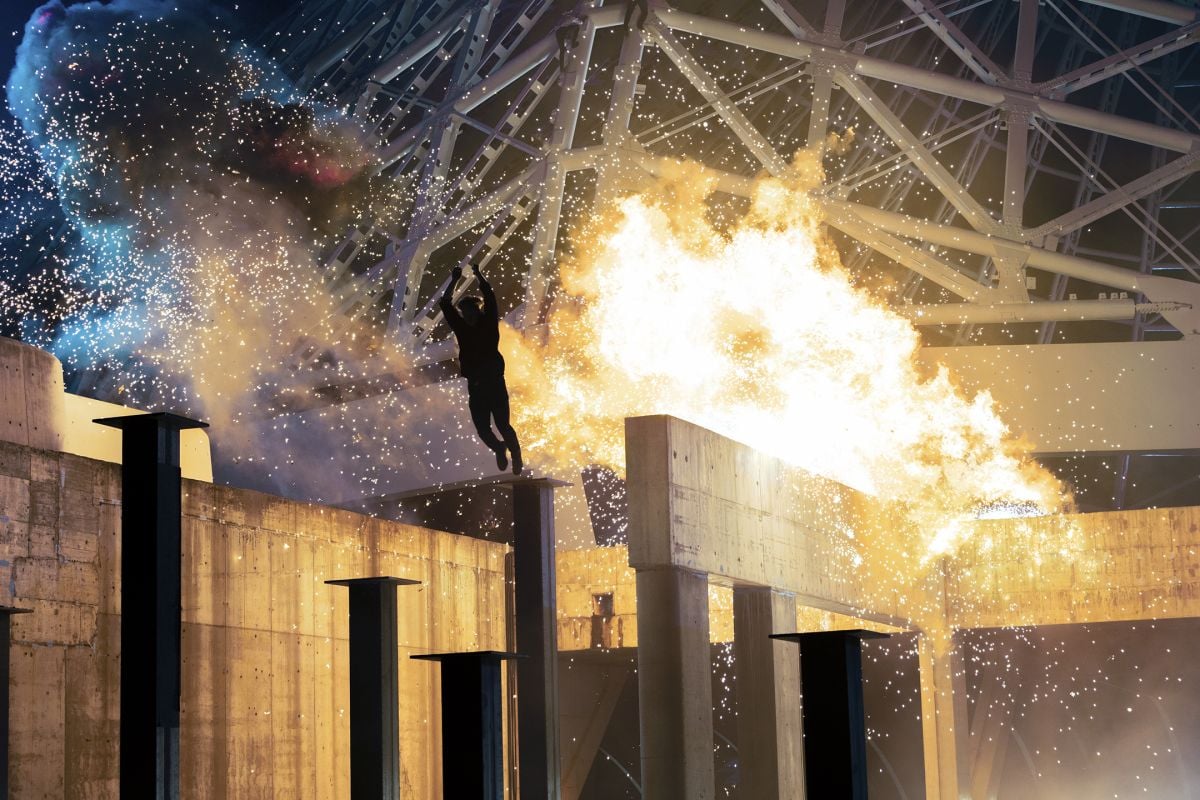
To help him accomplish all this, Bazelli relied extensively on local crews in Italy, Budapest and Abu Dhabi. A European crew structure was implemented, with electricians setting the lights and flags, and grips handling camera support.
Next, production moved to Abu Dhabi for the final month of shooting. With its monied, modern architecture, the UAE capital stood in for locations like Las Vegas and Hong Kong. In all, 24 different locations throughout the emirate were used, including the Aldar headquarters, Emirates Palace, the Etihad Towers, and the Louvre Abu Dhabi. The city’s twofour54 Media Zone is home to the region’s largest backlot, where lie the ruins of an old, bombed-out Middle Eastern city used for the sequence where One poses as an NGO at a Turgistan field hospital. Suddenly, a squadron of Rovach’s jet fighters screams overhead, dropping canisters of poisonous gas on civilians in the dusty streets. Beecroft extended this set and many others with digital mattes painted by Steve Messing and Thomas Pringle, who worked directly with the production designer to create environments as close to Bay’s specifications as possible.
A flashback to Two’s previous life in the CIA was staged in a southwestern area of the Abu Dhabi emirate Liwa Oasis, known for its date farms and some of the largest sand dunes in the world. Murat’s convoy speeds along an isolated desert road when it’s suddenly ambushed by a pair of Blackhawk helicopters (provided to the production by a local sheikh) and a platoon of U.S. soldiers. In a twist, Two captures Murat and turns him over to Rovach. “There was one road to that location, and the camera saw everything,” says Bazelli. “One mile before the set was this curve and everyone was parked behind it. We shot from sunrise to sunset without anyone coming to us or being able to leave. It was one of the hardest shoot days ever.”
One of the reasons Bay’s movies are so complicated to shoot is because much of what ends up on the screen — in this case, about three-quarters of the film — was captured-in camera. “In this movie there is really only augmentation of shots,” Bazelli explains. “Most of our visual-effects work is set extension and painting out unwanted elements.”
“The conversations I had with Michael were all about how to make our effects feel as photographic as possible,” says visual effects supervisor Richard R. Hoover. One way to do this was to virtually abandon blue- and greenscreen backgrounds. It’s the rare cost-cutting measure that’s also a creative consideration, because whatever time would’ve been spent lighting a chroma screen is instead dedicated to photography, and the shot is cleaned up in post. As Bazelli points out, “even if you’re shooting with a blue- or greenscreen, you have to roto around the fine details anyway.” One reason for this, says Hoover, is that “the reflectance quality of today’s chroma key material isn’t what it used to be in the strictly optical days; ambient light contamination from a chroma screen — and the color correction required to address it — often affects the rest of the shot.” Bazelli also observed that “the illumination for a scene is almost always perfectly suited for where the bluescreen is supposed to go, so you have to light around it.”
For 6 Underground, only a few actual bluescreens were used, and when stronger background separations were called for, Bazelli would use black solids, illuminated silks or laid down ordinary fabrics in shades that matched the ambient light of the scene. Otherwise, Bazelli was free to light as he pleased and point the cameras in any direction, confident that the VFX artists supervised by Jason Snell at Industrial Light & Magic would erase the unwanted elements. ILM also handled the car chase, everything related to Rovach’s yacht — including the scene where One turns it into a giant magnet — and the aforementioned fighter jet flyover.
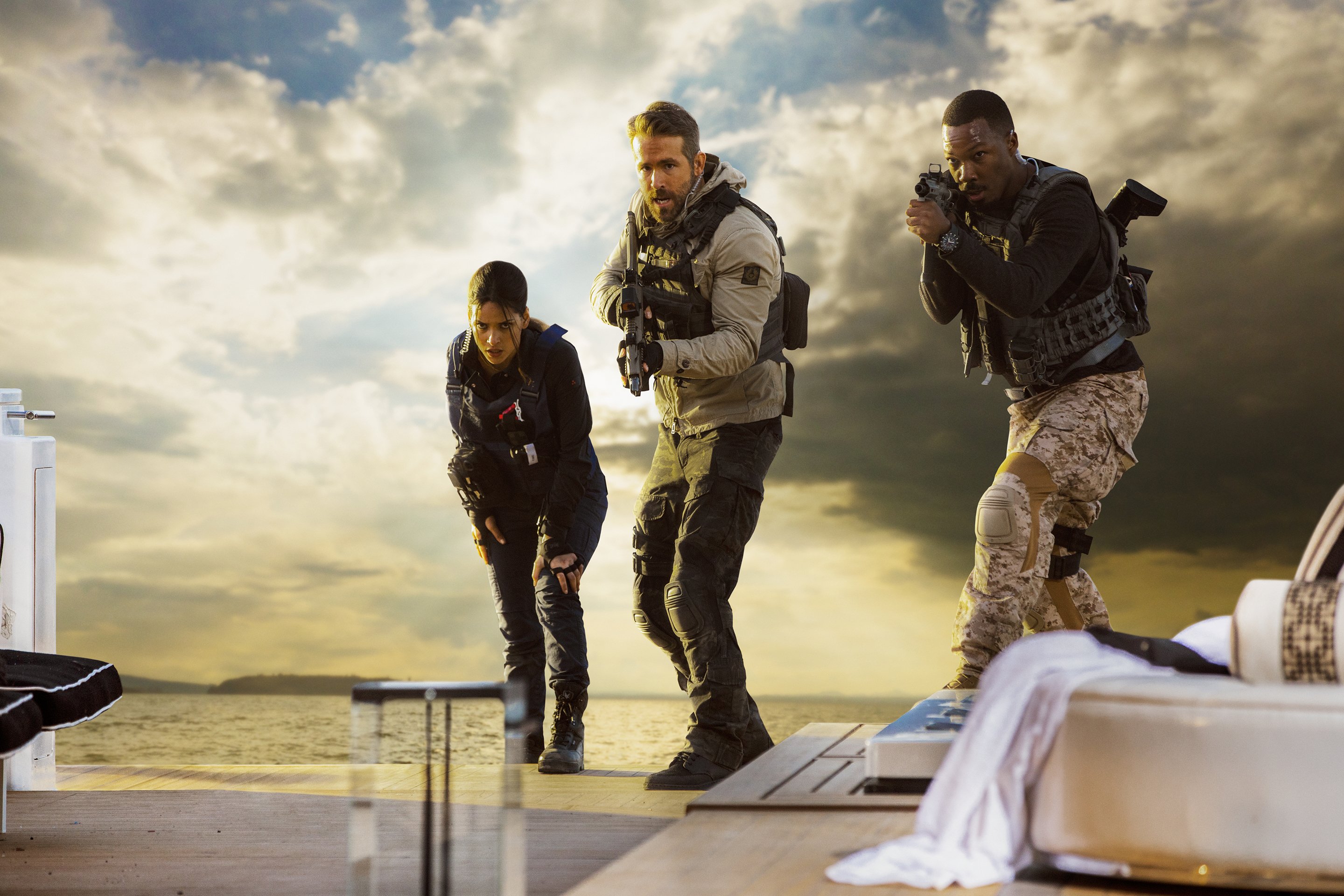
The sheer amount of footage generated by the production ruled out the possibility of a traditional dailies workflow, and the speed of production ruled out grading on set, so color data was manipulated in Colorfront OSD by DIT Steve Freebairn with Red and Venice LUTs — day, night, interior, exterior, warm and cool — developed by Bazelli, Bay and Company 3 founder and president and ASC associate member Stefan Sonnenfeld. A slightly desaturated skin LUT was developed in a step away from the saturated tones associated with Bay’s other films. “But if you want to do something different, it still has to fit within Michael’s style,” Bazelli notes. “You can desaturate actors’ faces if you bring that color in somewhere else. You can diffuse some parts of the frame as long as you make up for it with contrast in others.”
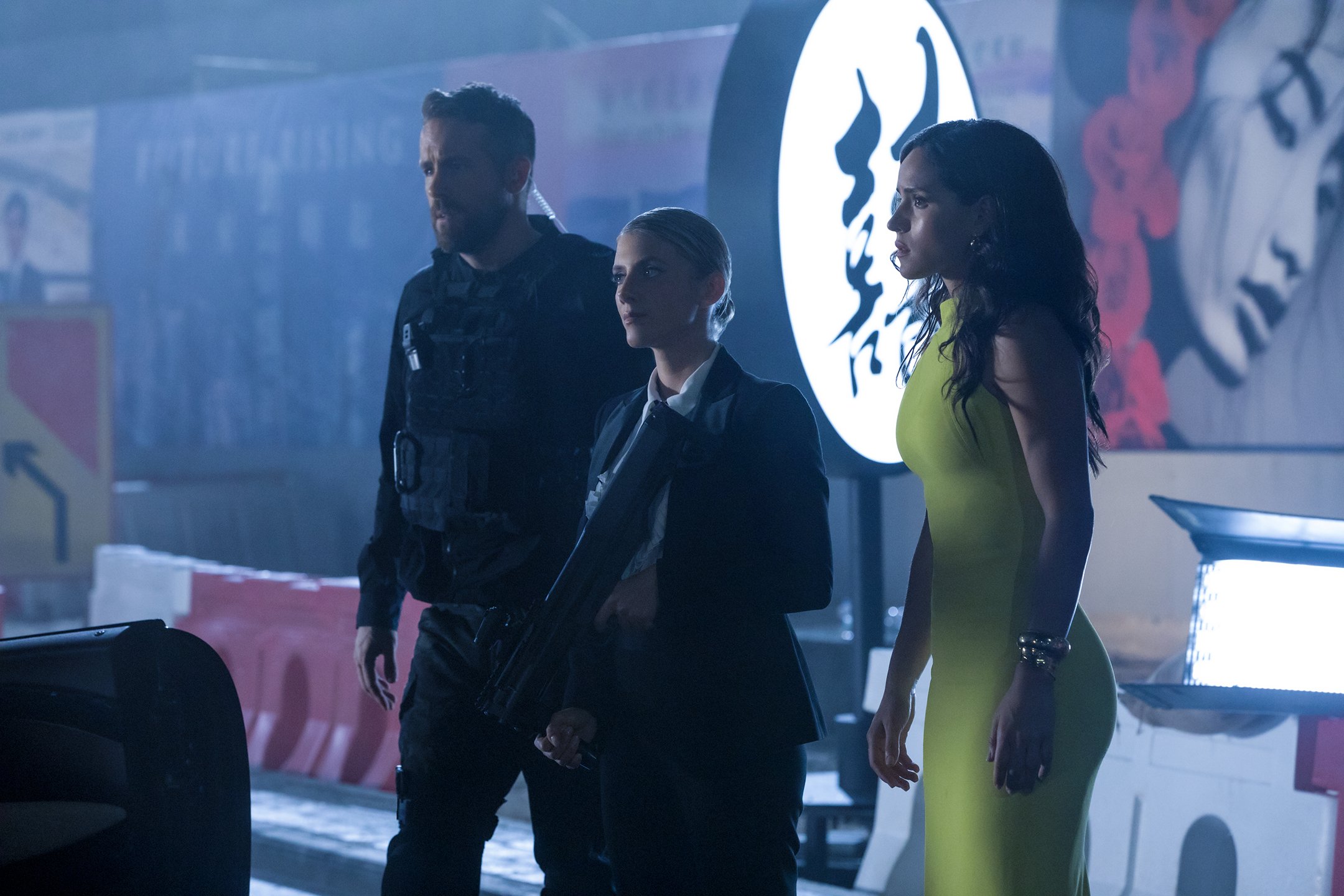
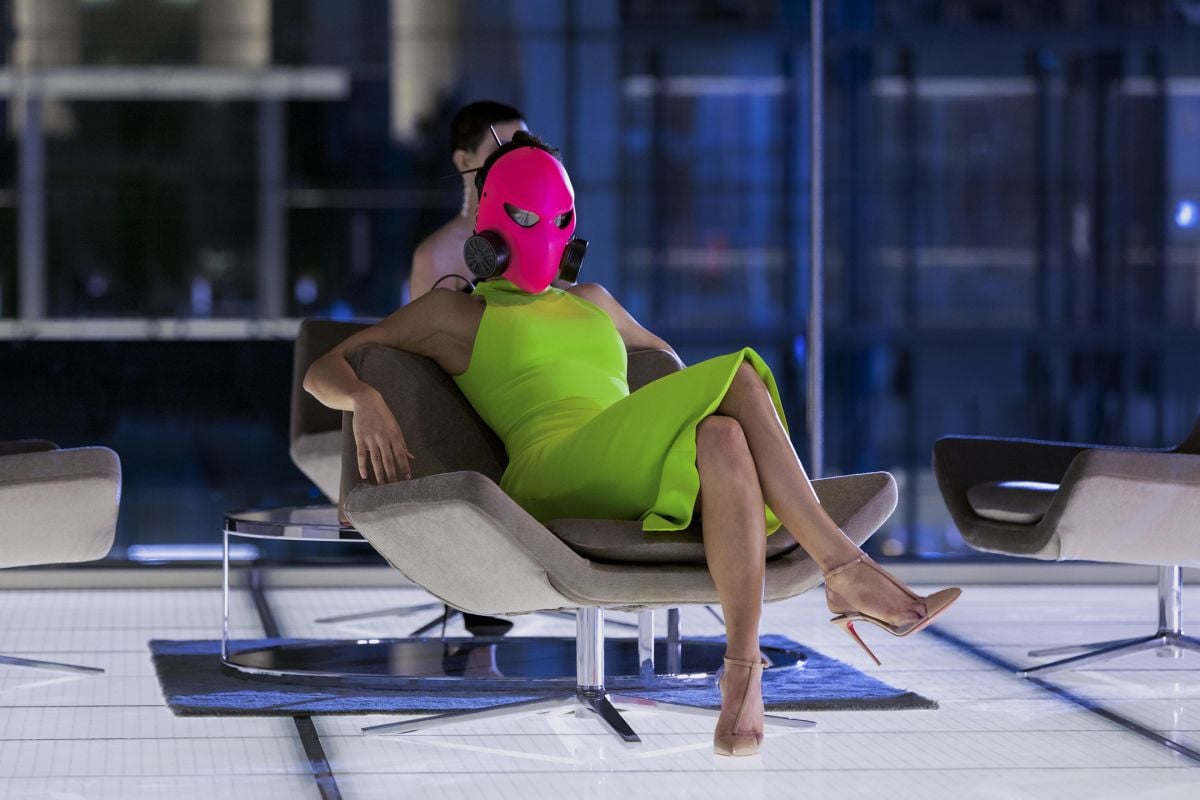
Footage was delivered on SSD shuttles to Augustus Color in Italy, and to Optix Dubai in the UAE for fast transfer via Aspera to Company 3 Los Angeles, where Sonnenfeld supervised the dailies color by Rich Flores. Sonnenfeld approved the dailies, then Bay, after which the crew was invited to view edited sequences on a weekly basis, “and that was the first time you would see the results of your work,” says Bazelli. All told, 16 different formats — from 4-perf 35mm to Phantom 4K to HD iPhone MP4 — in 50 different resolutions were used.
The color grade was performed by Sonnenfeld and Bay at Company 3 Los Angeles, with Bazelli providing some input. “Michael does the grading on his own — I was given a peek at the footage and gave my opinion, but our opinions were very similar,” the cinematographer remarks. “The way you shoot it is the most important part of the process. I knew that if I didn’t get it in-camera, I’d never get it at all.”
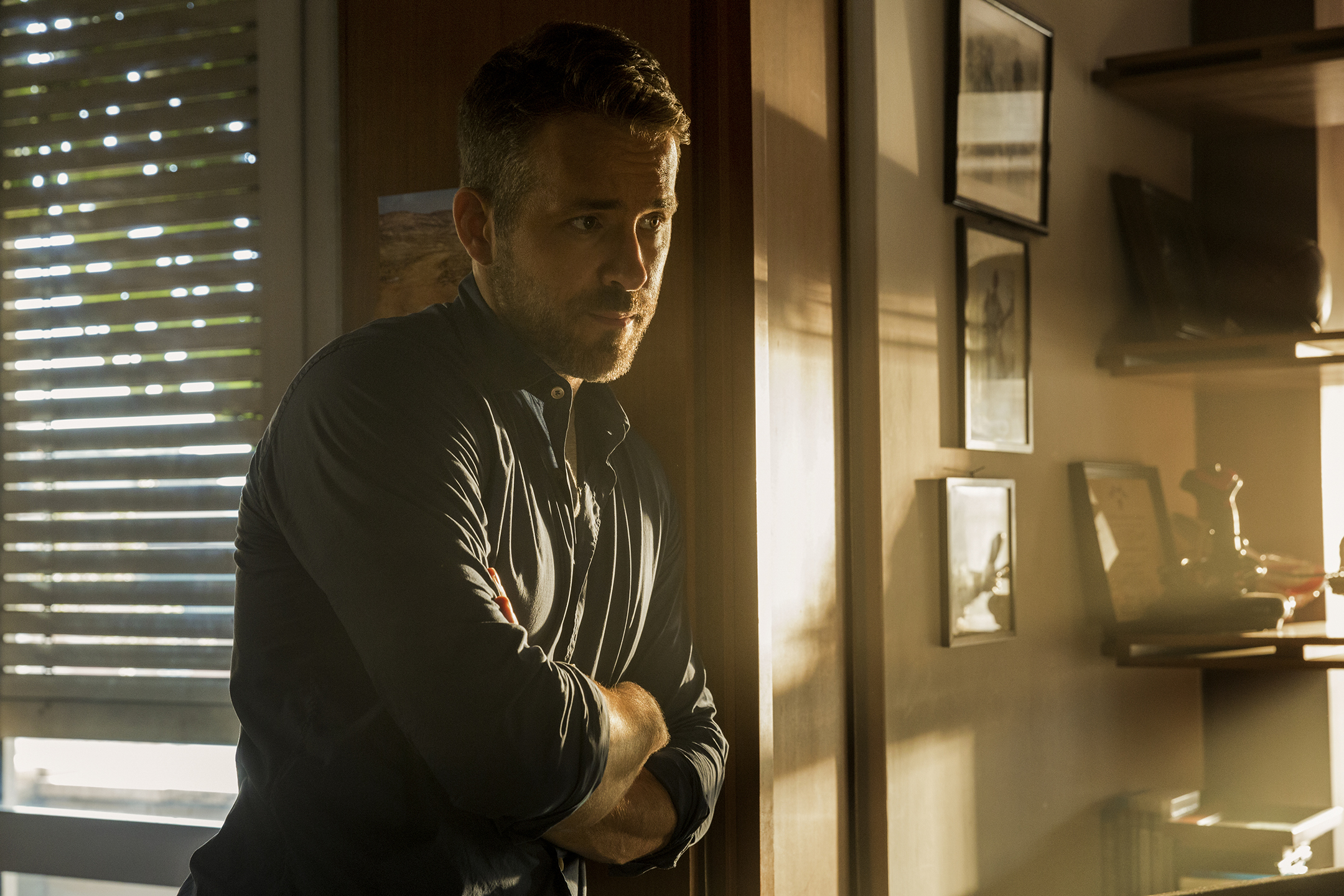
Working in Resolve, Sonnenfeld used gradients and power windows to augment the various Schneider and Tiffen effects filters Bazelli used in production. “The color grade is an absolutely critical part of the cinematographic process, especially for a Michael Bay film,” remarks Sonnenfeld, who previously collaborated with the director on numerous features including Bad Boys II, The Island, Transformers, Transformers: Revenge of the Fallen andPain & Gain, as well as the series The Last Ship. “We really dug deep into the high dynamic range part of the image for this one.” The film was delivered in UHD 3840 x 2160 Dolby HDR and as a 4096 x 1716 XYZ digital cinema distribution master.
While one might not always hear the word “fun” used to describe the experience of working on a Michael Bay movie, there’s a definite sense of pride and accomplishment at having survived its explosions, its heat, its cold, its danger and its excitement — not to mention bringing it in on time and under budget — without sacrificing the quality of one’s work. “I’ve done big movies before, but nothing like this,” Bazelli declares. “The scale of the action, the amount of planning, and the ad hoc, last-minute decisions where every option has to be on the table — all the while, Michael is pushing you to be the best you can, and you don’t want to disappoint. I hope we can do it again!”
TECHNICAL SPECS
2.39:1
Red Weapon 8K Monstro & 6K Helium, Red Raven, Sony Venice, Phantom Flex4K, GoPro Hero, Sony a7s, iPhone X, Samsung Galaxy, DJI Zenmuse X7, Arri IIC
Kodak Vision 3 5219
Panavision Primo T-series Anamorphic primes, Vantage One primes
Digital Intermediate
